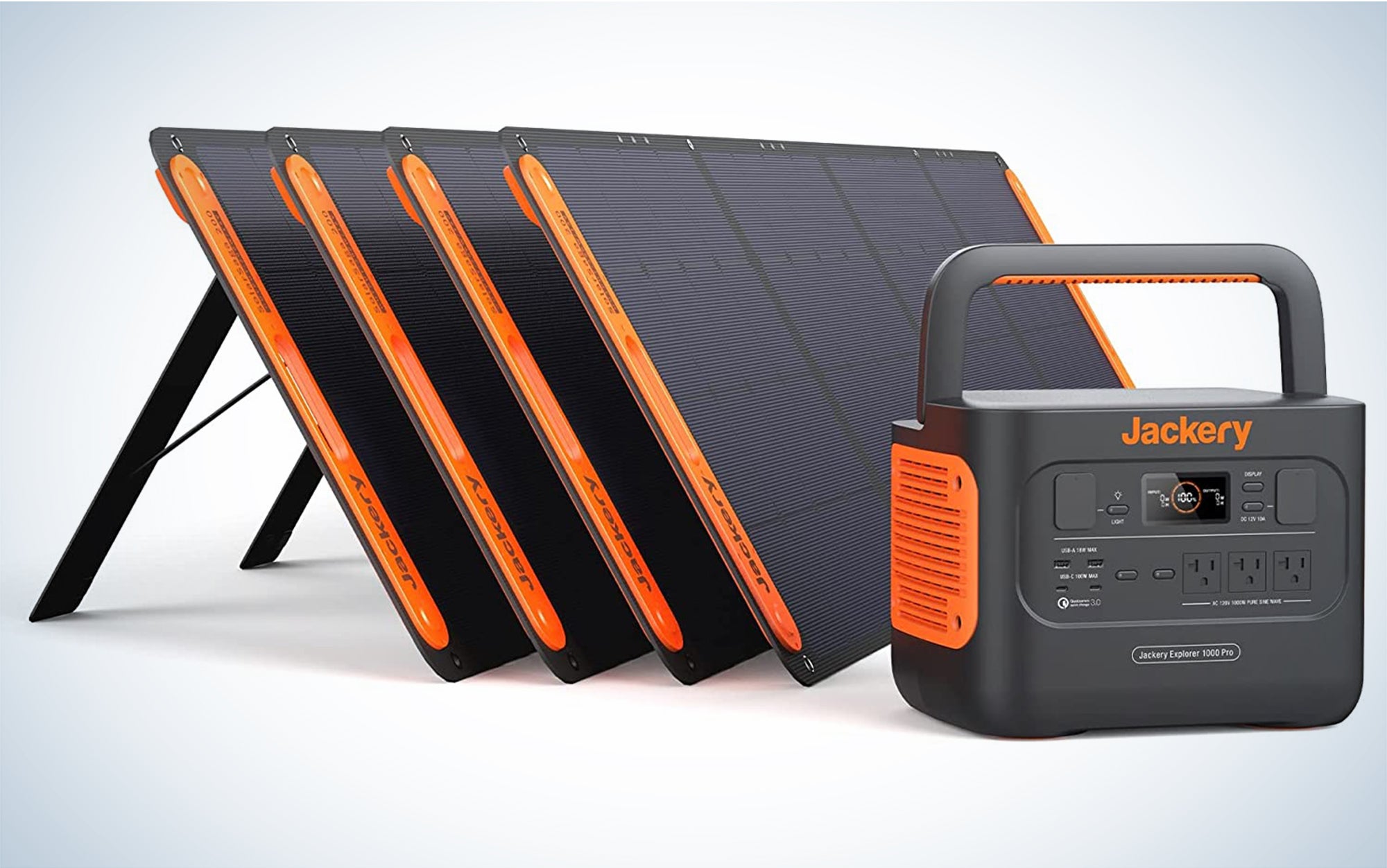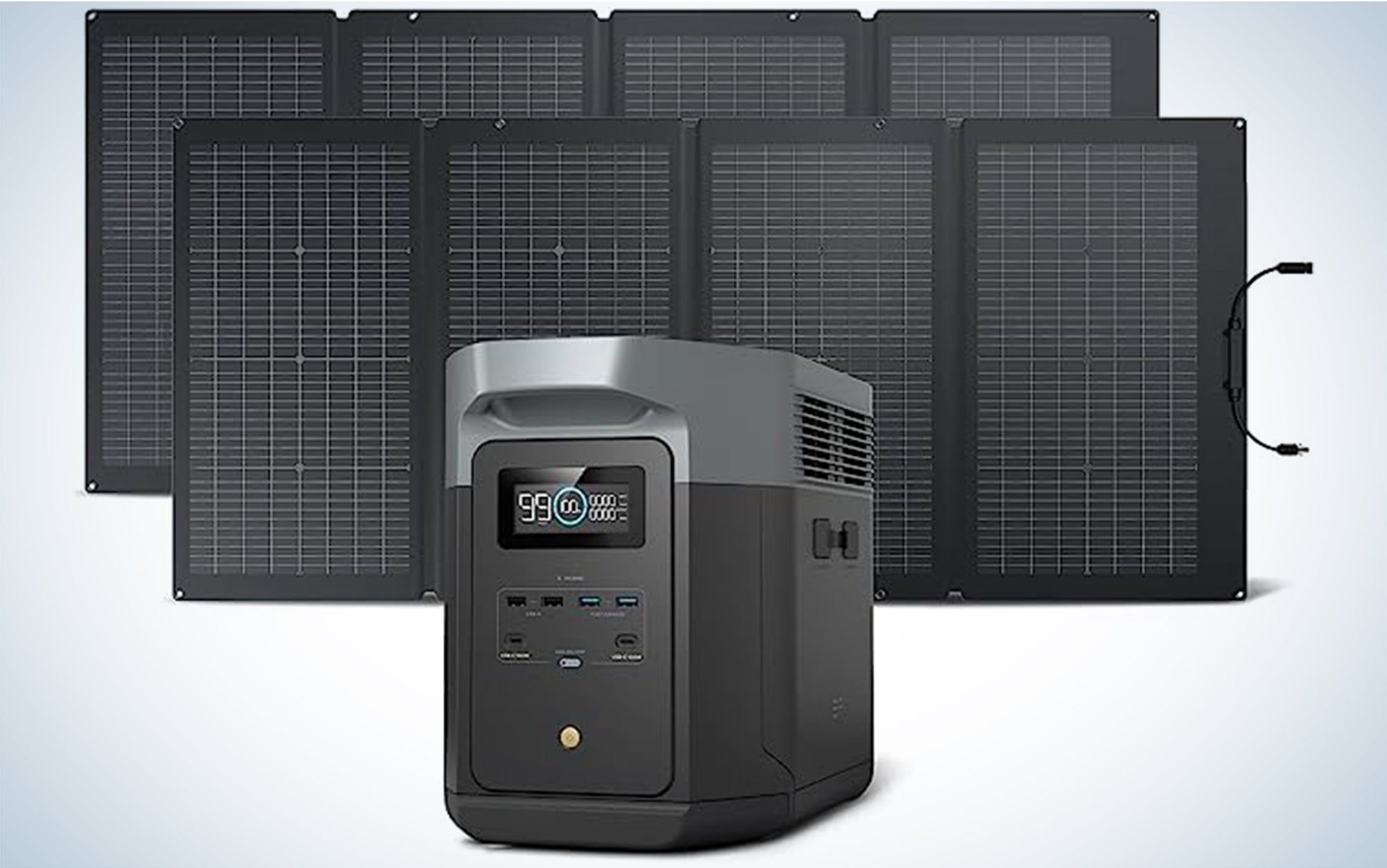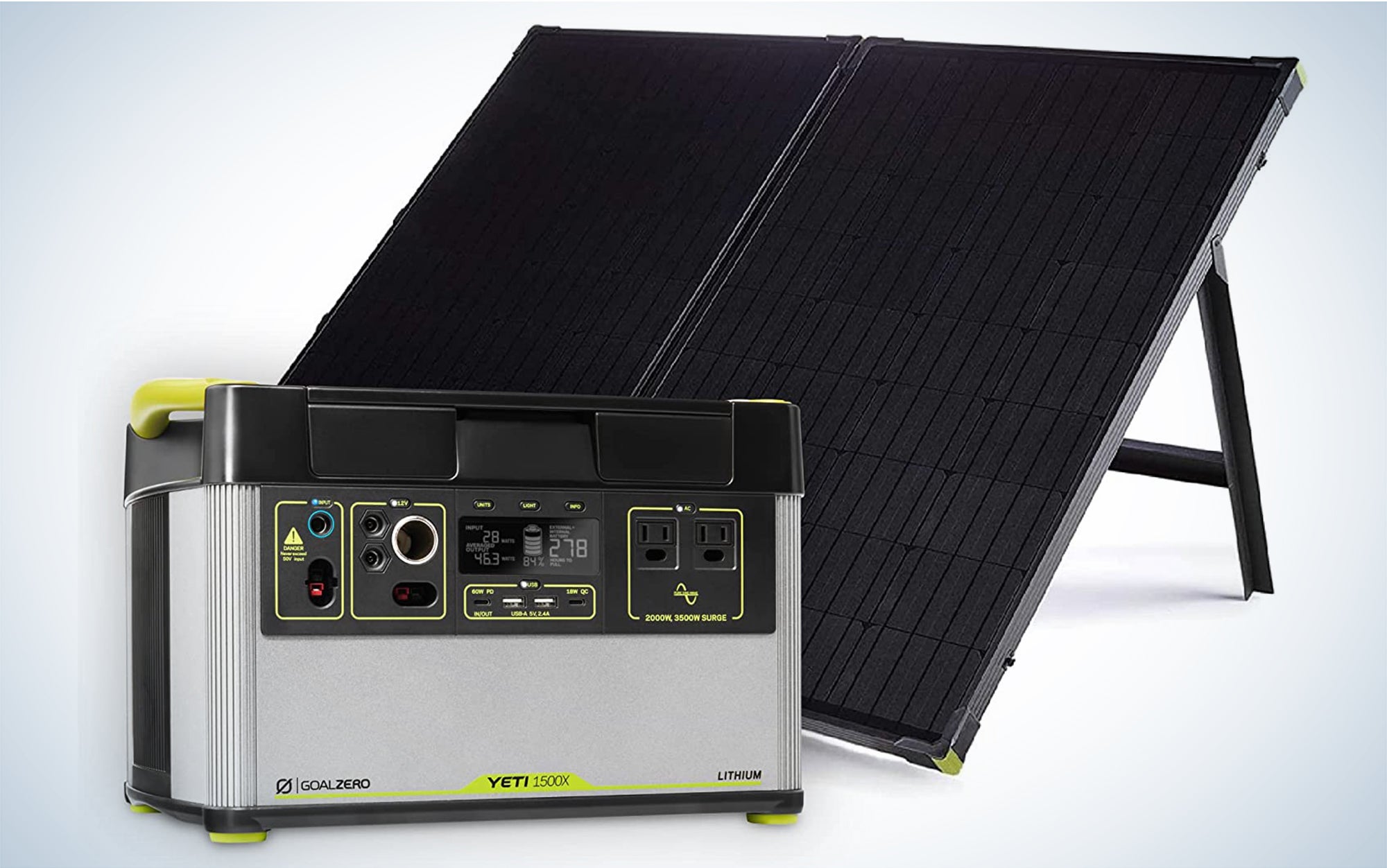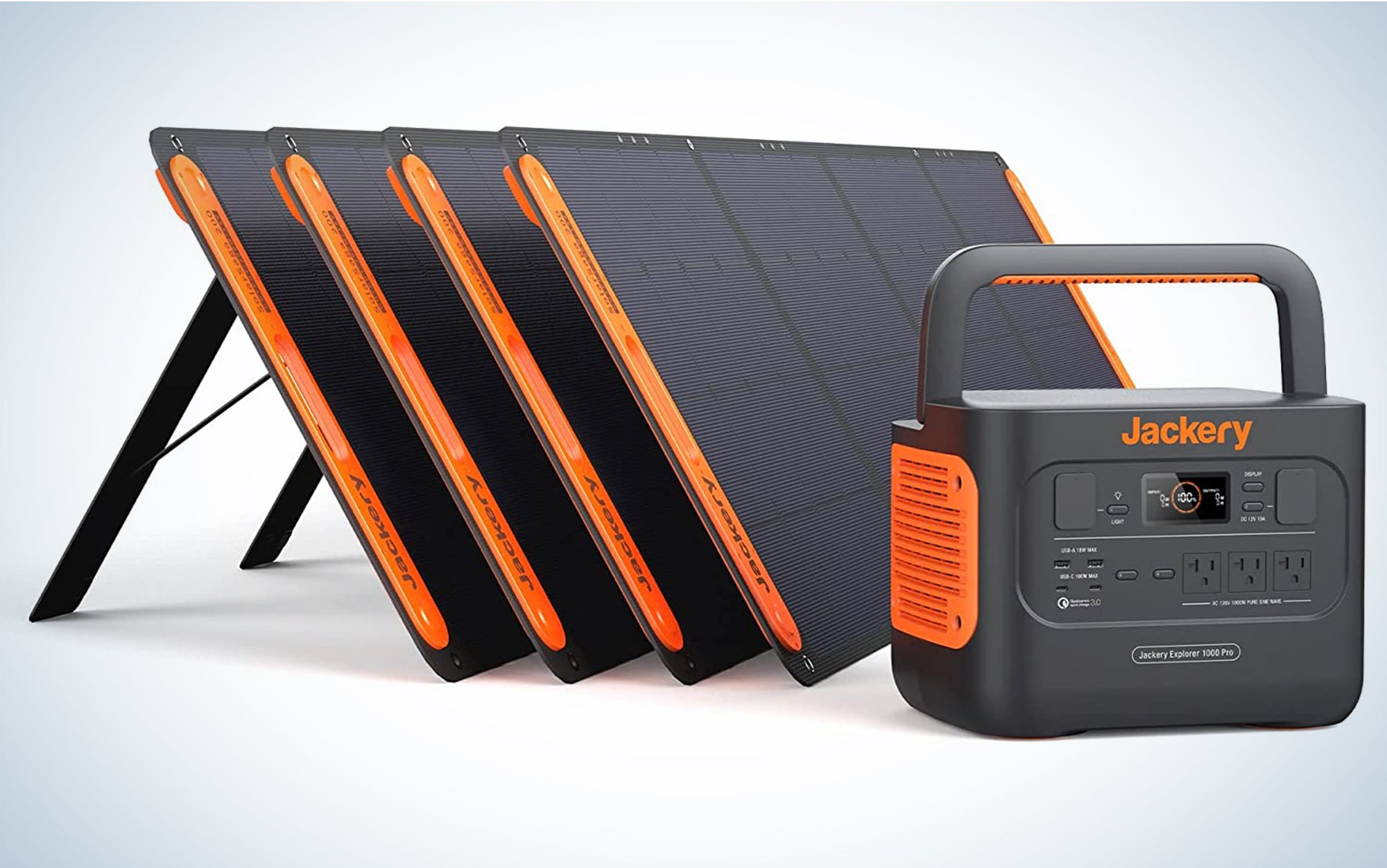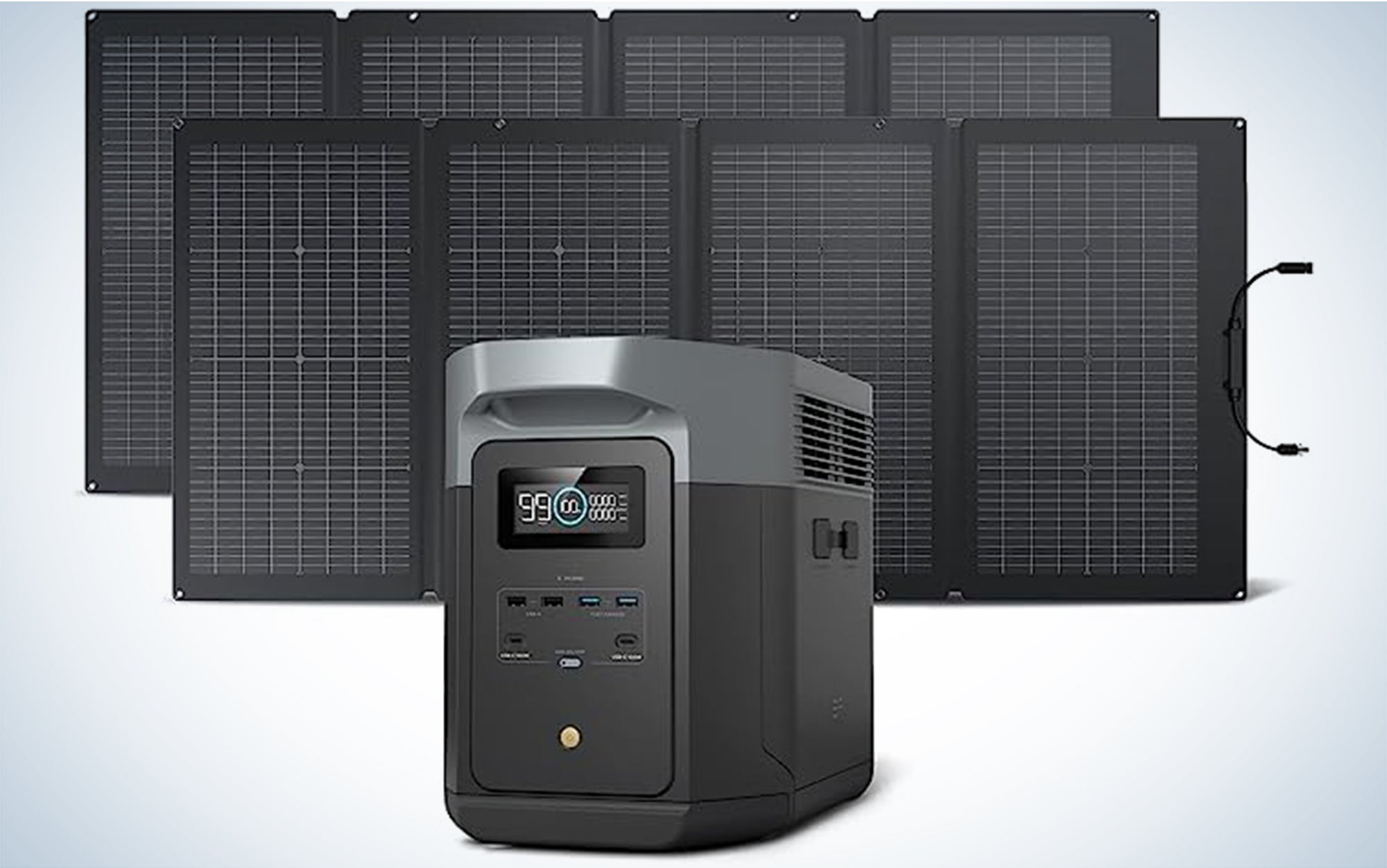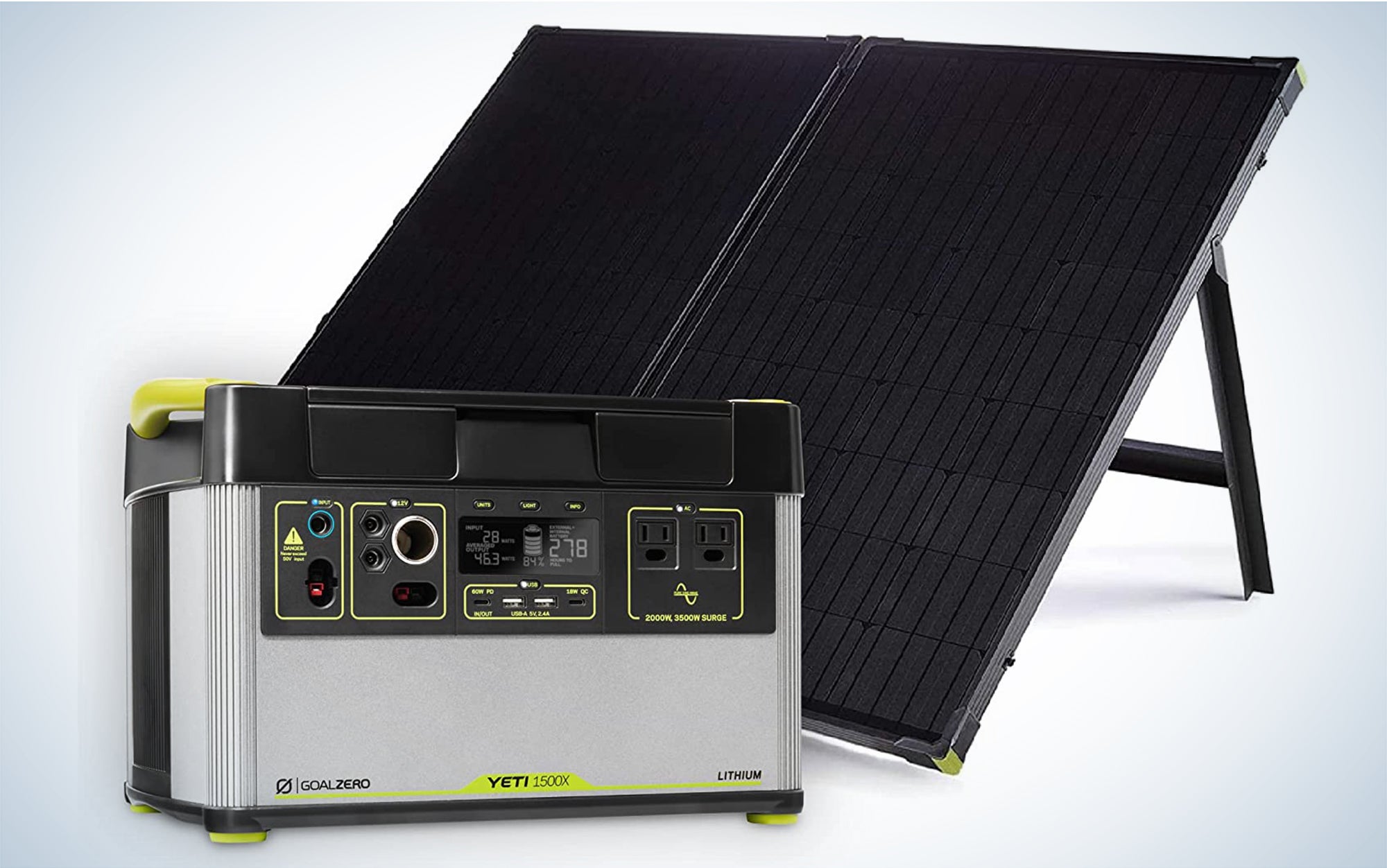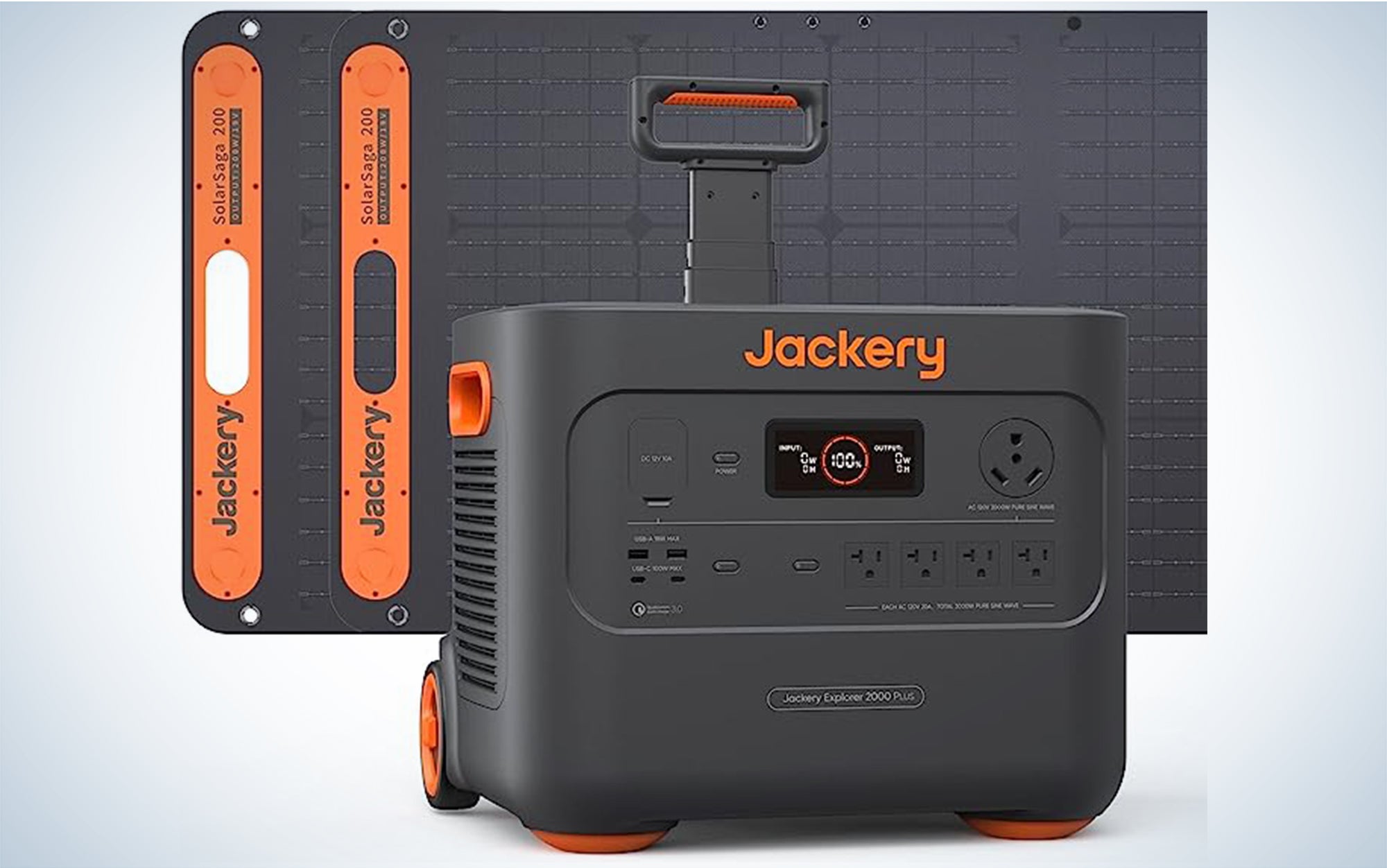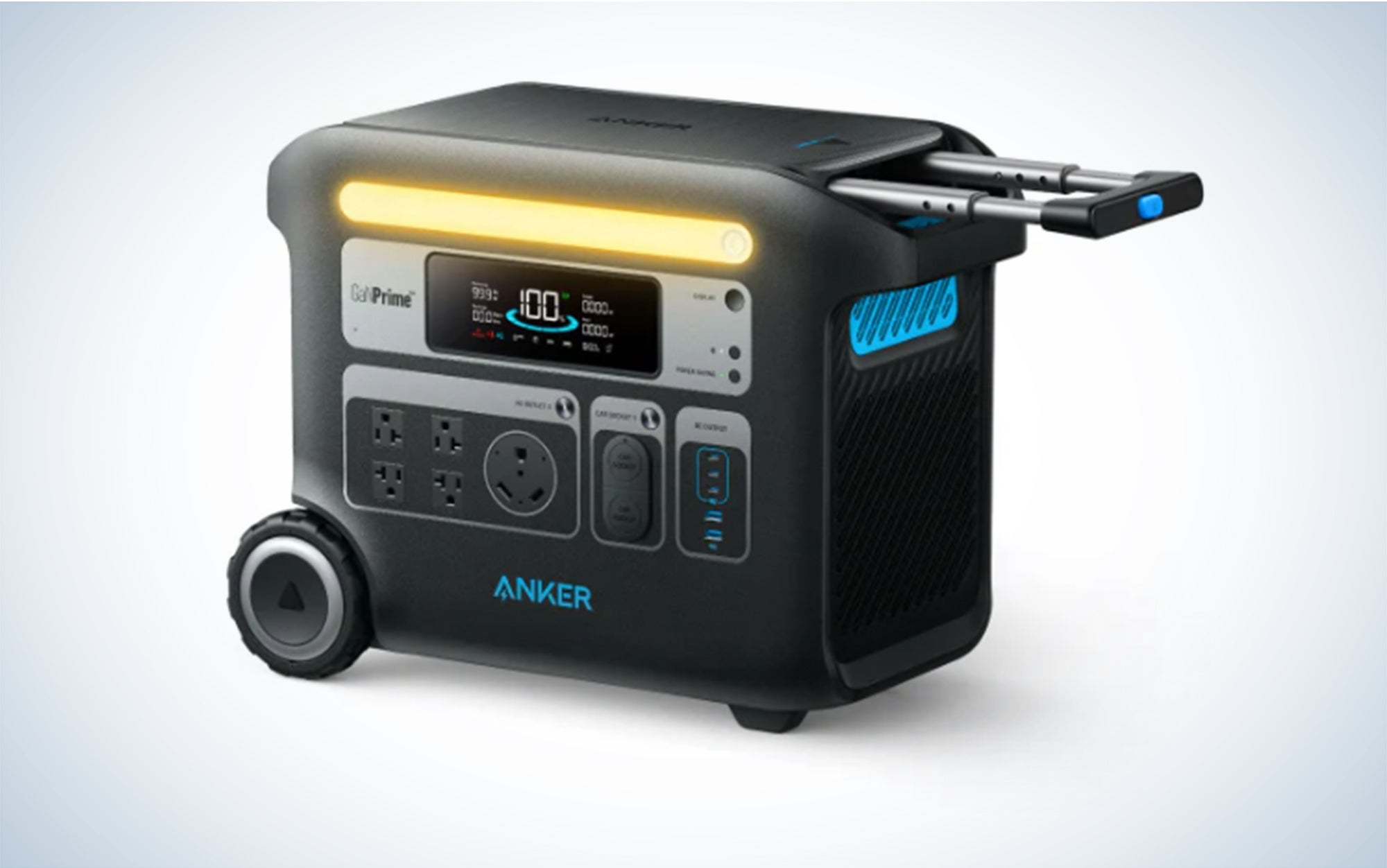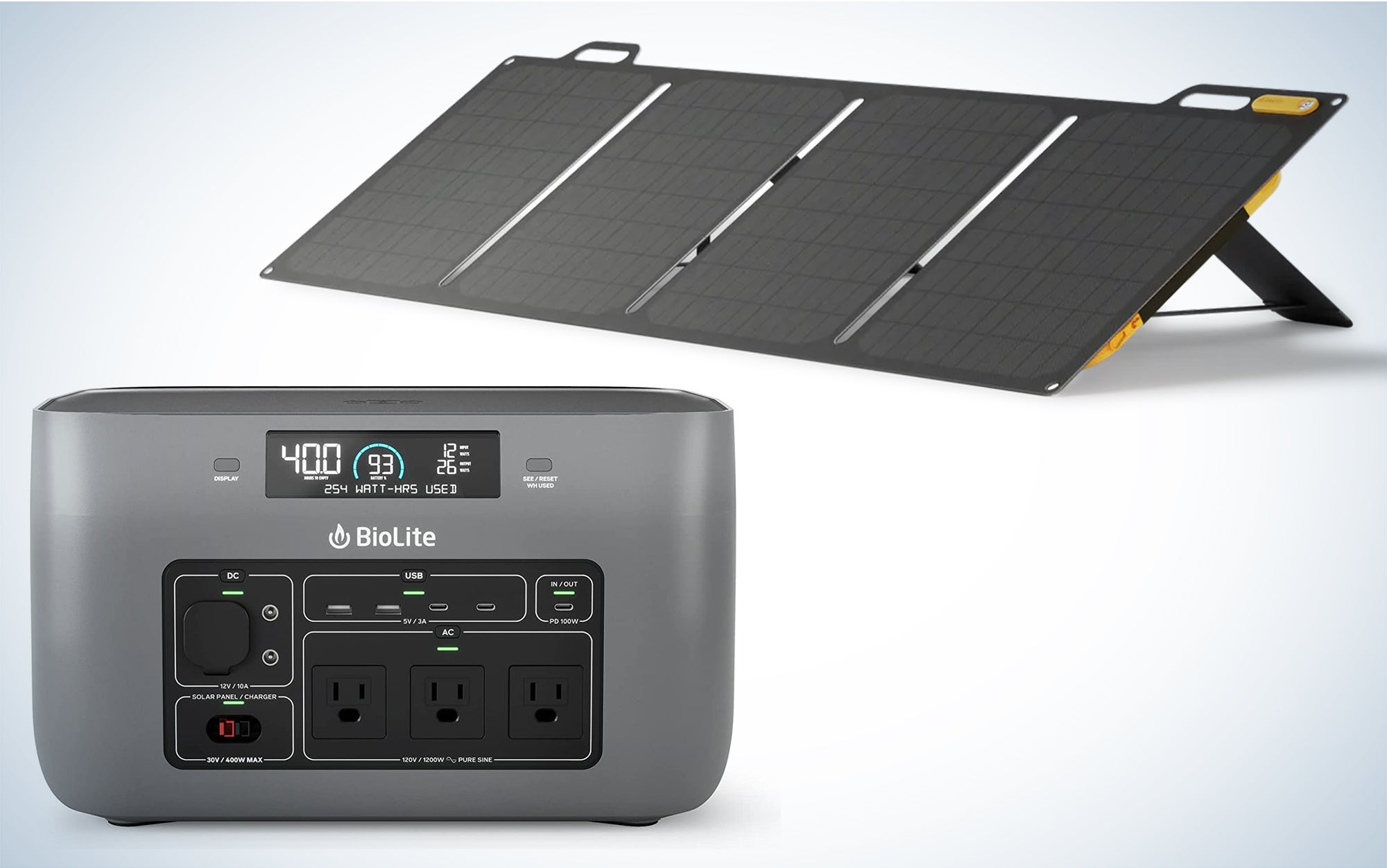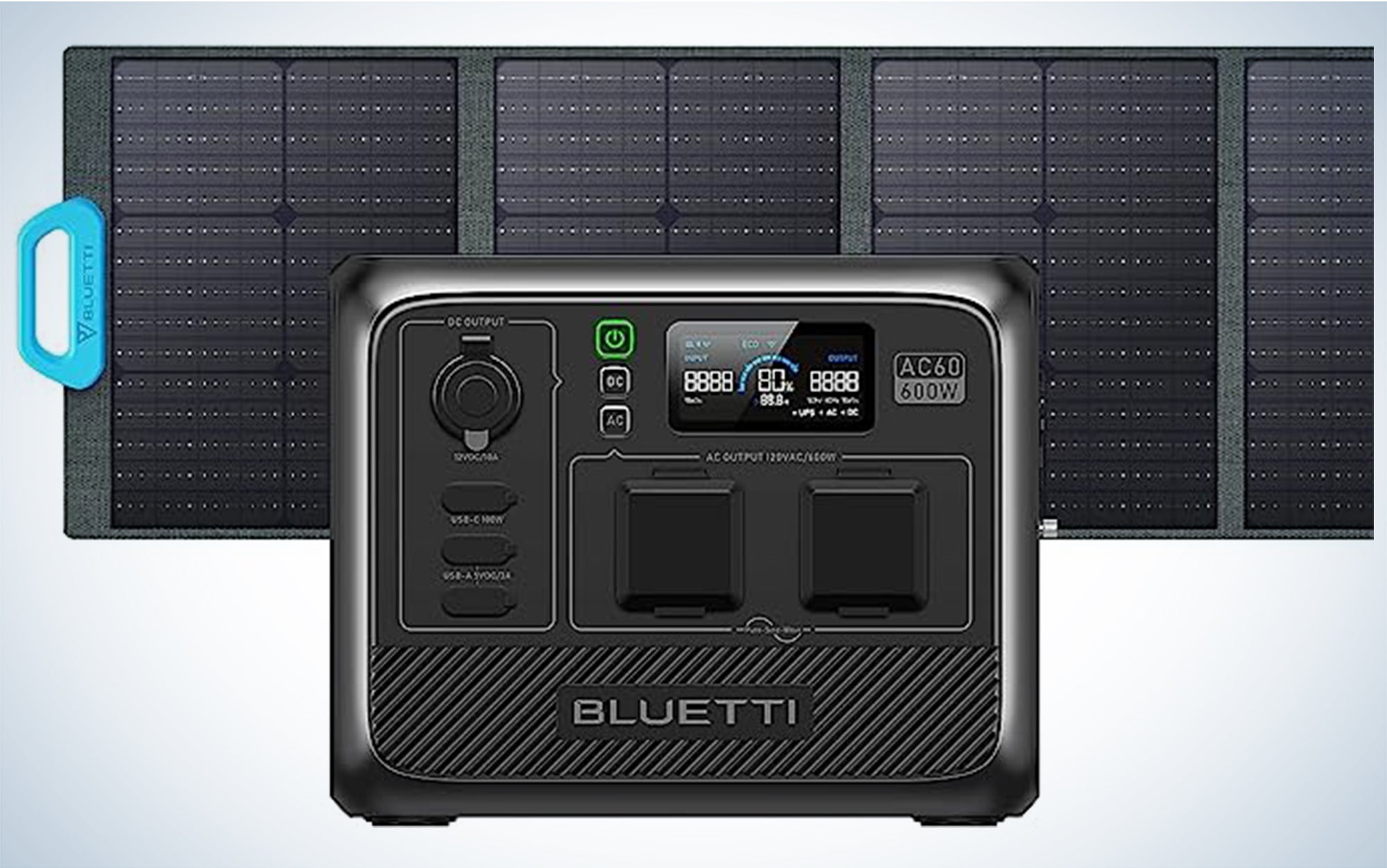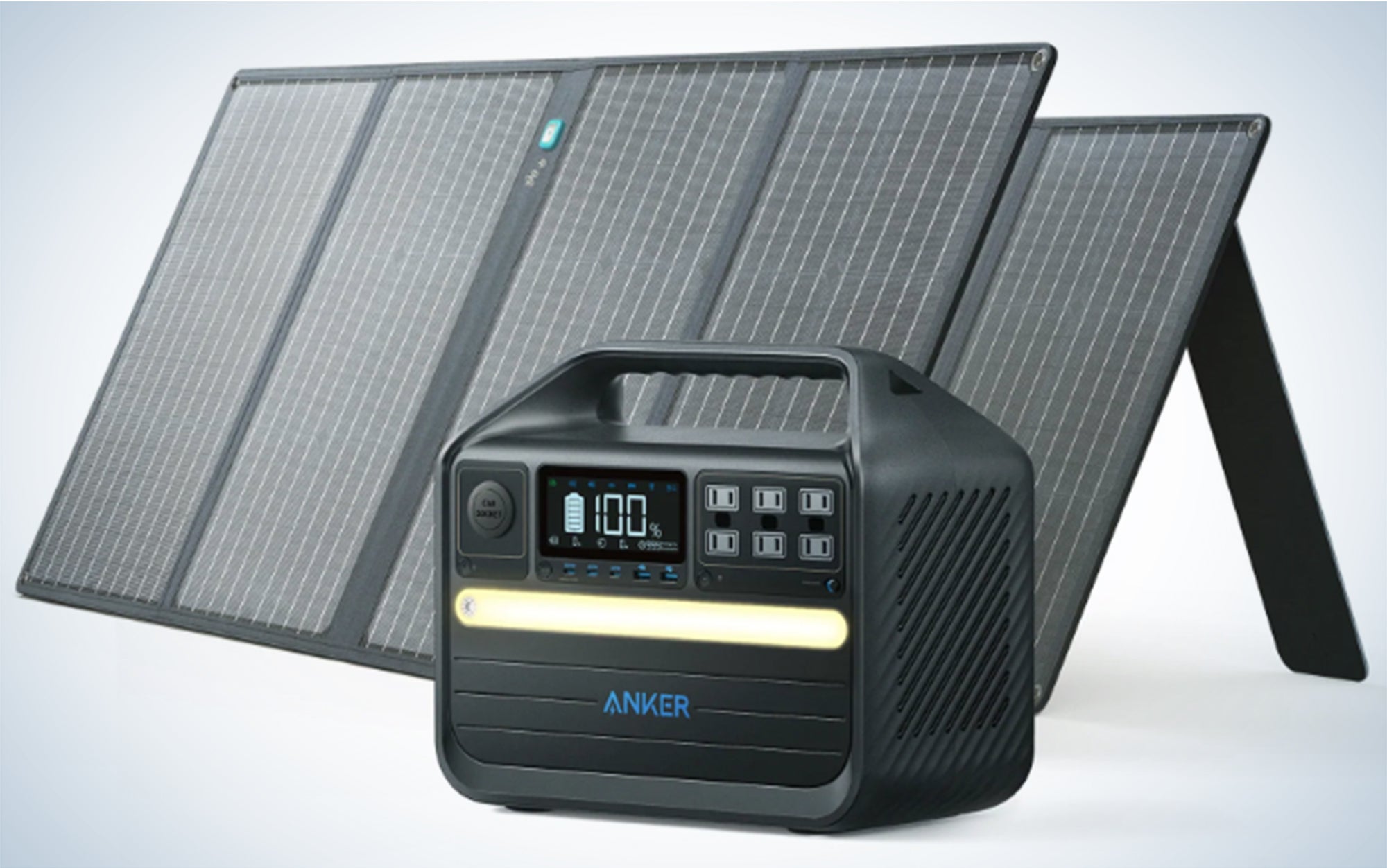The Best Solar Generators of 2023, Tested and Reviewed
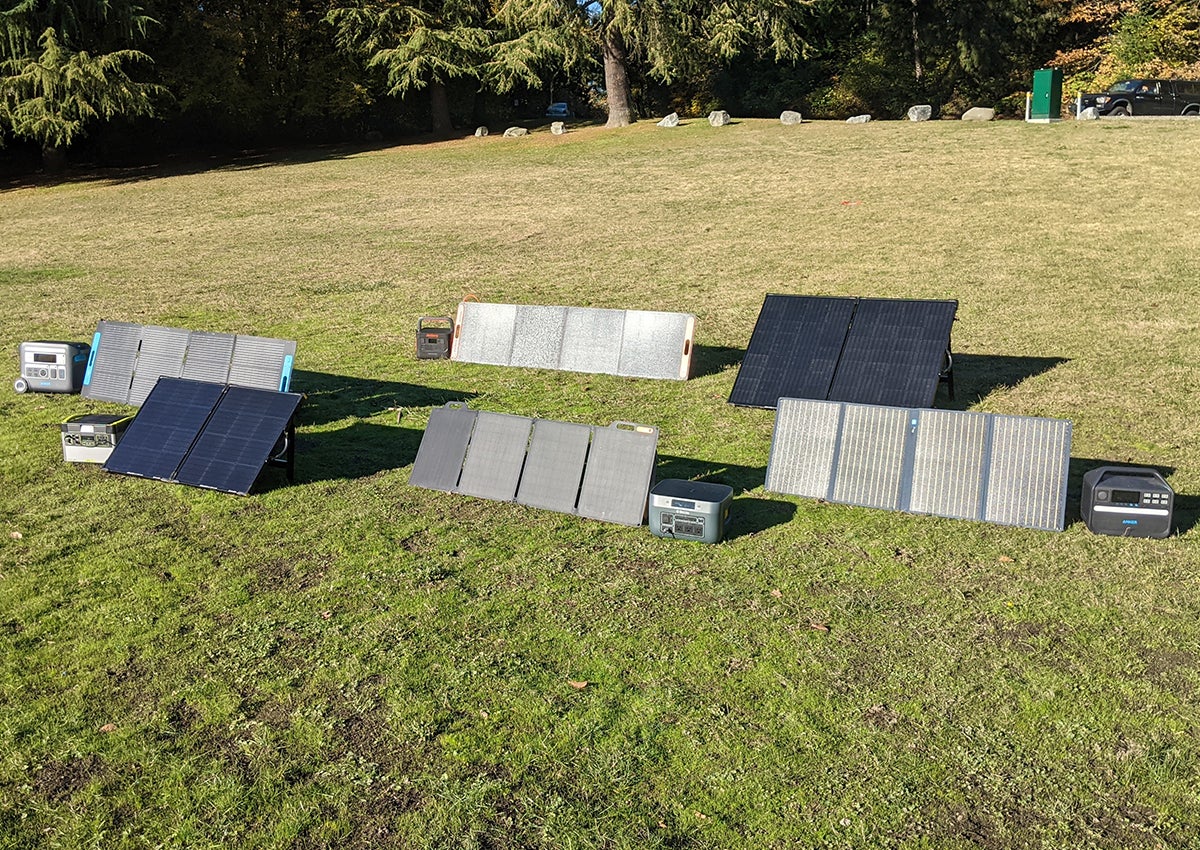
We may earn revenue from the products available on this page and participate in affiliate programs. Learn More ›
Whether you are outfitting your home in case of an extended power outage or looking for a steady supply of off-grid power for your overlanding setup, it’s never been a better time to purchase a solar generator. But sifting through all the available options on the market—power stations that are lunchbox-sized to luggage-sized, solar panels that can pack in a backpack to multiple eight-foot long panels you chain together—can take a lot of time and effort. To help you choose the best solar generator for your purpose, we tested some of the most innovative models from Jackery, EcoFlow, Goal Zero, Bluetti, Anker, Zendure, and BioLite side by side to see how they stacked up.
- Best Overall: Jackery Solar Generator 1000 Pro
- Best Value: EcoFlow Delta 2 Max + 220W Solar Panel
- Best for Camping: Goal Zero Yeti 1500X + Boulder 200 Briefcase Solar Generator
- Best for RVs: Jackery Solar Generator 2000 Plus
- Most Maneuverable: Anker SOLIX F2000 Solar Generator 767
- Most Portable: BioLite BaseCharge 1500 + Solar Panel 100
- Best Weather Resistance: Bluetti AC60 + Bluetti PV120 Solar Panel
- Best Budget: Anker 555 Solar Generator
How I Tested the Best Solar Generators
There are two components to a solar generator—a solar panel and a power station. To understand the performance of the overall package, I looked at each component and then also assessed how they worked in tandem.
- Solar Panels were initially tested in early fall, when the angle of the sun is less ideal than it would be at the peak of summer, affecting the potential of each panel to reach its claimed maximum output. Additional solar panel testing was conducted in the spring and summer months; however, a control panel (the Anker 625) was used to ensure similar testing conditions. In all rounds of testing, there were clear skies, though haziness, time of day, and season can affect power output. In those instances where the Anker 625 showed a greater or lower solar input than from the initial test, the other panels were weighted appropriately. I tested solar panels using power stations of the same brand, but where possible, I also used different panels with different power stations to see if that affected the results.
- Power Stations were evaluated on a number of criteria. After fully charging all the power stations, I left them in a climate-controlled room for three days and then outside for twenty-four hours in near-freezing temperatures—none of the power stations registered any loss of power during this test. Next, I plugged various appliances into all of the power stations to see how they handled the volume: a dehumidifier, a sunlamp, two laptops, one of the best power banks for camping, a pair of headphones, another power station, etc. Using these setups, I ran each power station down to half its estimated output. Finally, I considered how compatible each power station was with other solar panels, as well as additional features, such as Bluetooth-compatible apps, display panels, wireless charging, USB-C input ports, and more.
Solar Panels Tested
In my initial test, I looked at six solar panels rated for both 100W and 200W capacity from Goal Zero, Anker, Jackery, and BioLite. I checked that all the solar panels were pointed in the same direction and at the same angle when testing their measured output against their claimed output.
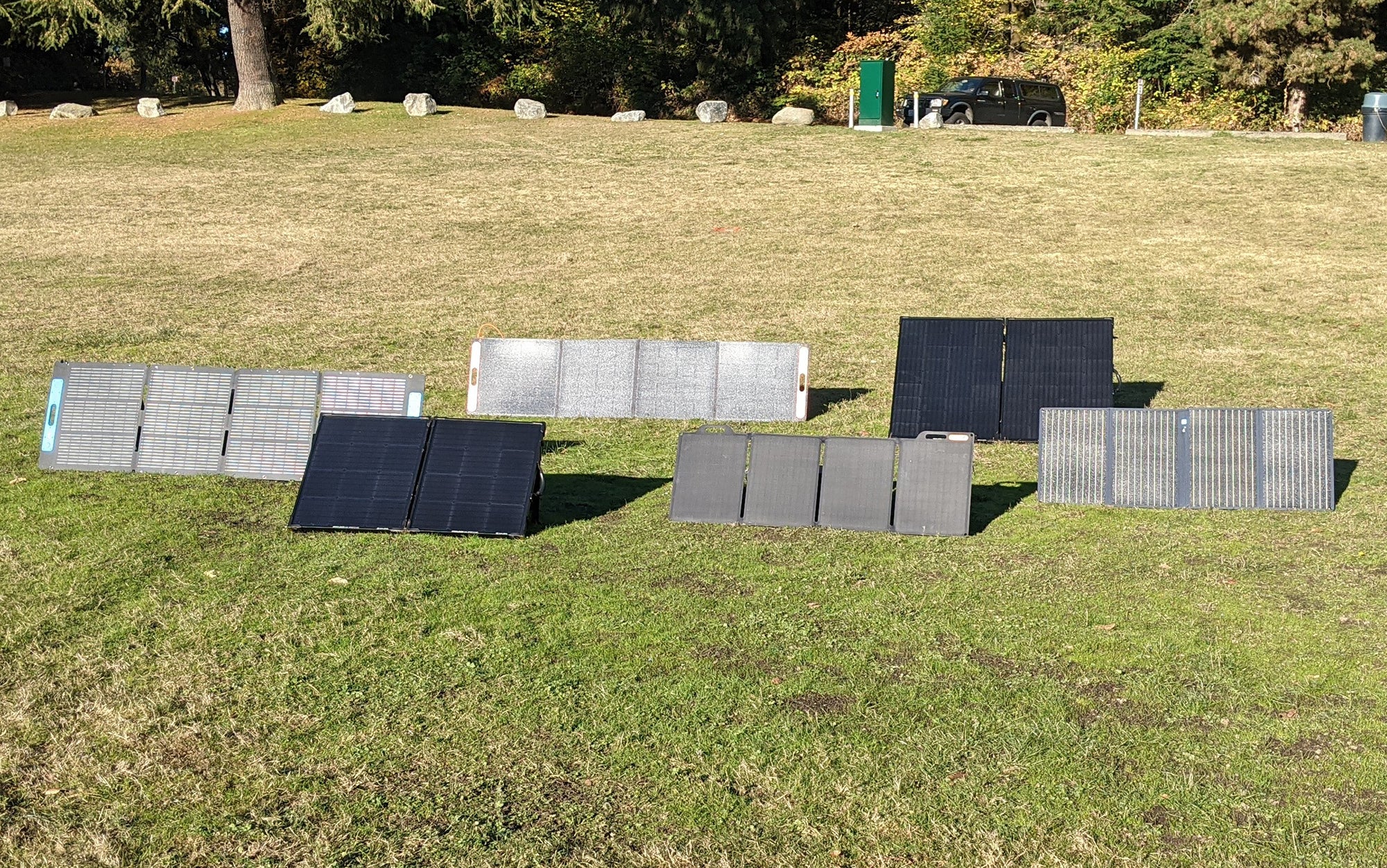
Additional follow-up tests were conducted to compare the power output of 100W, 200W, and 400W panels, from Zendure, Bluetti, and EcoFlow, with this initial set. I also conducted a retest of the BioLite panel, which was the lowest performing panel in the original group. In each instance, I set up a panel from my initial testing group to ensure similar testing conditions.
| Model | Price | Weight | Size (unfolded) | Output Ports | Warranty | Claimed Output | Measured Output |
| Zendure 400W Solar Panel | $1400 | 39 pounds | 1000 x 2240 x 25 mm | XT-90 | 3 years | 400W | 382W* |
| EcoFlow 220W Bifacial Portable Solar Panel | $650 | 21 pounds | 820 x 1830 x 25 mm | XT-60 | 1 year | 220W | 197W* |
| Jackery SolarSaga 200W Solar Panel | $700 | 18 pounds | 540 x 2320 x 25 mm | DC | 1.5 years | 200W | 184W |
| Goal Zero Boulder 200W | $550 | 42 pounds | 40 x 53.5 x 1.75 inches | High Power Port (HPP) | 2 years | 200W | 145W |
| Anker 531 Solar Panel | $550 | 20 pounds | 23.75 x 83.75 x .75 inches | XT-60 | 2 years | 200W | 158W |
| Bluetti PV120 Solar Panel | $320 | 13 pounds | 533 x 1652 x 21 mm | DC | 1 year | 120W | 110W* |
| Goal Zero Boulder 100W | $250 | 20 pounds | 40 x 26.75 x 1.75 inches | High Power Port (HPP) | 2 years | 100W | 73W |
| Anker 625 Solar Panel | $330 | 11 pounds | 57 x 20.75 x 1.75 inches | XT-60 | 2 years | 100W | 94W |
| BioLite Solar Panel 100 | $400 | 10 pounds | 20 x 57.5 x 1 inches | High Power Port (HPP) | 1 year | 100W | 70W* |
Two solar panels have been tested twice as a part of this test: the BioLite Solar Panel 100 and the Jackery SolarSaga 200W. The BioLite panel was retested at the manufacturer’s request; they had initially sent a reviewer sample and felt that the performance of the actual panel would show improvement. The second panel was 17 watts more powerful than the initial panel, and the numbers in the above table reflect that change.

Jackery sent two new SolarSaga 200Ws along with their new 2000 Plus power station. During testing, these two panels were not as powerful as the initial SolarSaga 200W I had tested in tandem with the 1000 Pro. These two panels were about 10 watts and 20 watts less powerful than the original panel. There is no visible difference in these newer panels compared to the original. As I have not had the chance to retest any other panels from the initial test, I have left the original, higher value as the official number.
Power Stations Tested
The power stations I tested ranged in size from 403 watt-hours to 6,438 watt-hours, and were capable of either 110 volts or 120 volts (the latter is what you’ll need to run most major appliances).
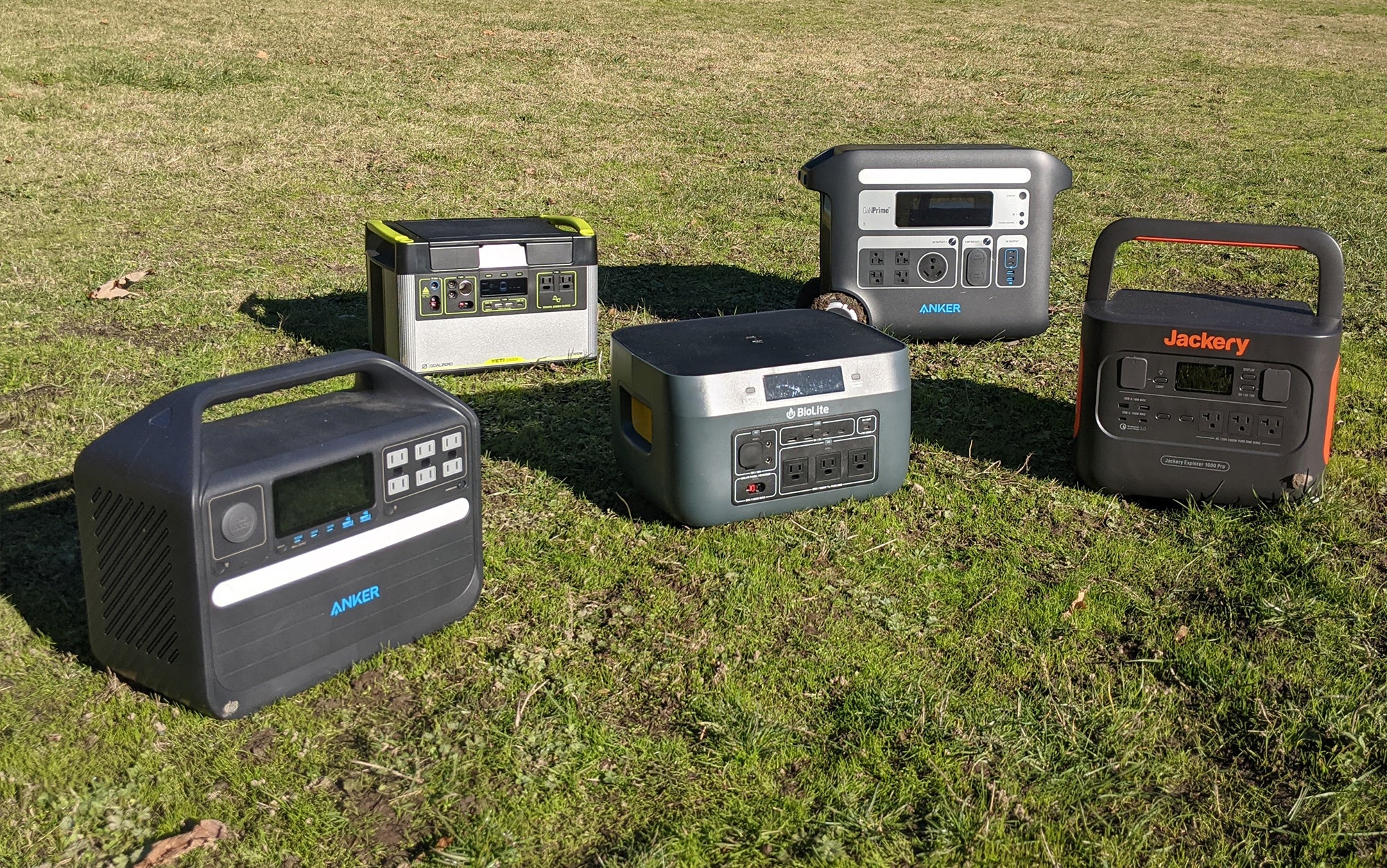
While my initial testing field was reasonably comparable in terms of weight and overall size, further testing has included power stations that were as heavy as I am as well as units that were on the line between power station and one of the best power banks.
| Model | Price | Weight | Wh | Input Ports | Input Max for Solar | Max Voltage for the AC Outlet | App? | Warranty |
| Zendure SuperBase V6400 | $6000 | 130 pounds | 6,438 | XT-90 | 3000W | 120V | Yes | 5 years |
| EcoFlow Delta 2 Max | $1900 | 50.7 pounds | 2,048 | AC and XT-60 | 1000W | 120V | Yes | 5 years |
| Anker 767 | $2000 | 67 pounds | 2,048 | AC and XT60 | 1000W | 120V | Yes | 5 years |
| Jackery Explorer 2000 Plus | $2200 | 61.5 pounds | 2,043 | AC and DC | 1400W | 120V | Yes | 5 years |
| BioLite BaseCharge 1500 | $1700 | 26.5 pounds | 1,521 | USB-C, high power port (HPP) | 400W | 110V | No | 2 years |
| Goal Zero Yeti 1500X | $1800 | 45.5 pounds | 1,516 | USB-C, 8mm, high power port (HPP) | 600W | 120V | Yes | 2 years |
| Anker 555 | $900 | 29.8 pounds | 1,024 | DC and USB-C | 200W | 110V | No | 5 years |
| Jackery Explorer 1000 Pro | $1100 | 25.5 pounds | 1,002 | AC and DC | 800W | 120V | No | 3 years |
| Bluetti AC60 | $700 | 20.1 pounds | 403 | AC and DC | 200W | 120V | Yes | 6 years |
All of the power stations were capable of holding a charge for extended periods of time, losing no power in either the three-day indoors test or the 24-hour outdoors test in subfreezing and near freezing temperatures. However, where the power stations in the initial test have begun to show a drop in power retention over time; I have noted as such.
Best Solar Generators: Reviews & Recommendations
Best Overall: Jackery Solar Generator 1000 Pro (Explorer 1000 Pro + Solar Saga 200W)
Jackery
Key Features
- Power Station Capacity: 1002 watt-hours
- Solar Panels: Four 200-watt solar panels
- 184 watts generated by one panel in direct sunlight
- Max AC Output: 120 volts and 1000 watts
- Also available with a 2000Wh power station
- Also available with two 80-watt panels
Pros
- Powerful solar panel
- Easy to use
Cons
- Smaller power station than other models I tested
The Power Station
Along with the BioLite BaseCharge 1500 and Anker 555, the Jackery Explorer 1000 Pro had one of the more streamlined user interfaces of anything I’ve tested. There are separate buttons to activate the USB outlets, AC outlets, and DC outlet, along with a button to turn on the power station’s light (in case you want to light up your camp or home) and one to turn on the display. The display here gives you the bare minimum of information—watts in, watts out, percent of the battery remaining, and the time to charge or deplete the battery based on the current conditions.
The Explorer 1000 Pro has an output of 1000 watts (2000 watt peak), which is enough juice to power many modern refrigerators. But given that its battery life is only 1002 watt-hours, it can only supply that power for about a day (assuming it’s not charging anything else) unless it’s also being supplied with fresh juice from a solar panel setup at the same time. For some, this won’t be an issue, as they’ll simply be using the battery to channel power to their other devices during the day while it’s charging, and then using the battery at night to power more low-key items like the best camping fans or maybe one high-energy device like a portable fridge.
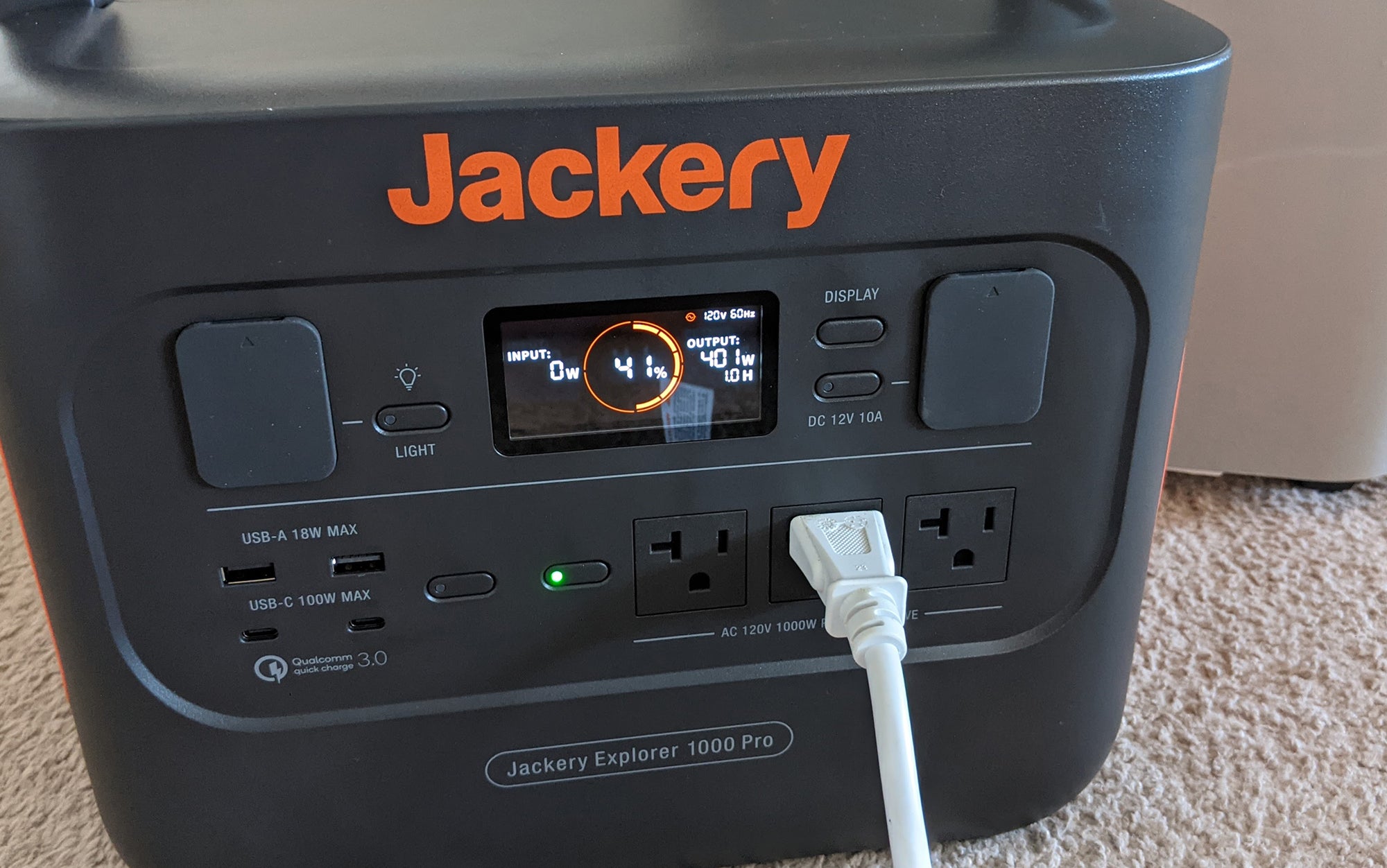
At over 25 pounds, the Jackery Explorer 1000 Pro, is one of the more transportable units I looked at, but it’s still not something that you’d want to lug more than a hundred feet or so at a time. It’s proven to be very capable at holding a charge long-term, even after months of sitting in an unheated garage.
The Solar Panel
I originally tested the SolarSaga 200W solar panel as a full setup, with four panels plugged into a single power station. This test showed the full power of the array, which registered 650 watts of power generation on a sunny (albeit hazy) day. I retested a single panel in tandem with the rest of the units in this review more recently, and under completely clear skies, the panel was even more impressive: It registered 184 watts of energy coming from a single panel. If you don’t have much time to recharge your power station from the sun, then the full setup with all four panels is a no-brainer. (More recent testing of newer panels showed a slight drop in power; however, it is unclear if this is because of natural variation or drop in the product’s efficiency. Either way, this is still a best-in-class panel.)
It is, though, a little complicated. Each panel comes with a carrying case and a cable that connects back to the two DC ports on the Explorer 1000 Pro. If you see a math problem here, that’s correct: You’ll also need two of the Jackery Solar Panel Connectors, which, strangely, are not included in the purchase price. Two of these can be used to double the number of panels you can connect to the Explorer 1000 Pro.
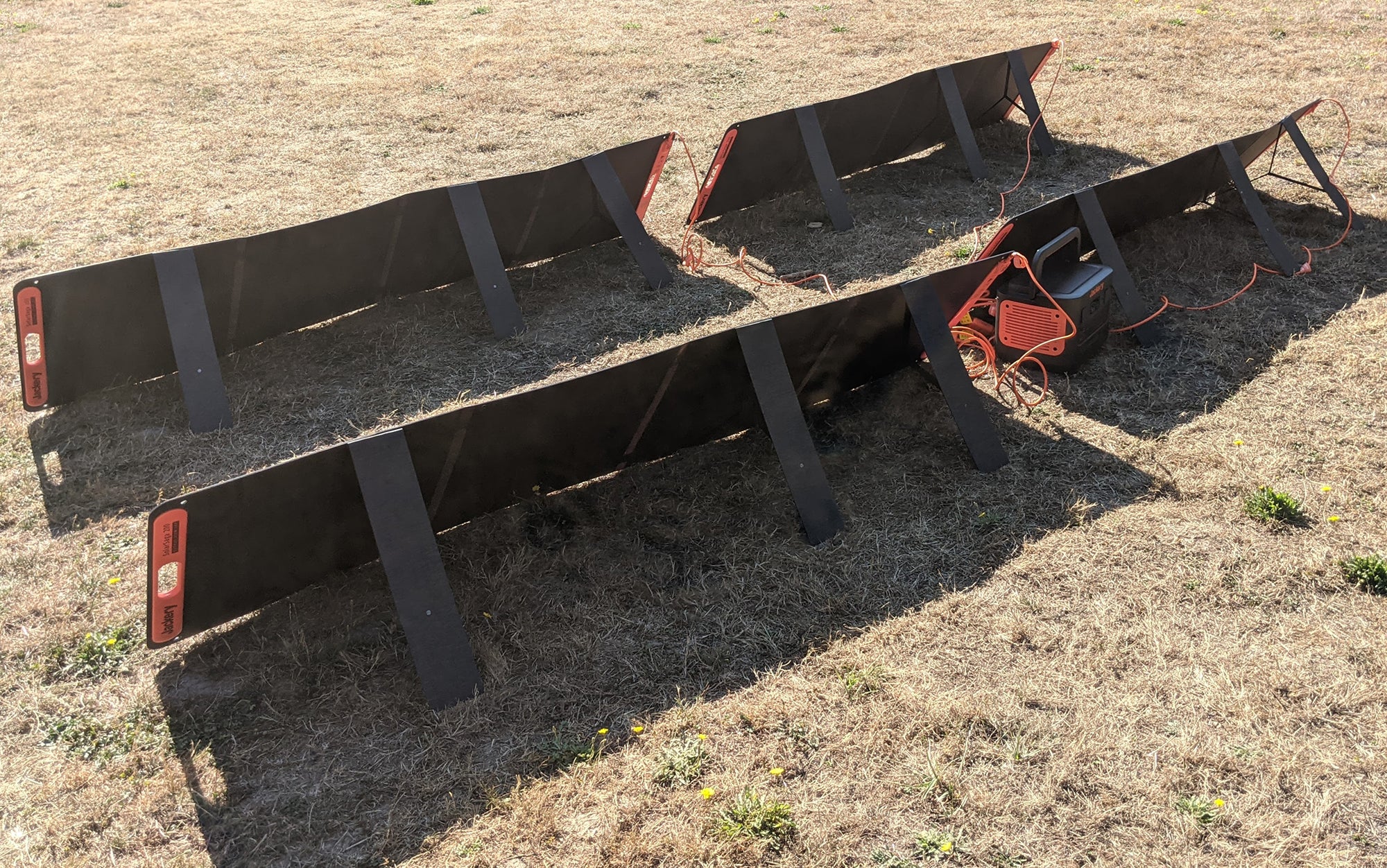
Setting up and taking down this many panels takes some time, but I was impressed by how easy and intuitive it was. That’s because Jackery streamlined the number of ports on each unit, making it that much clearer what cable connects to what unit in what port.
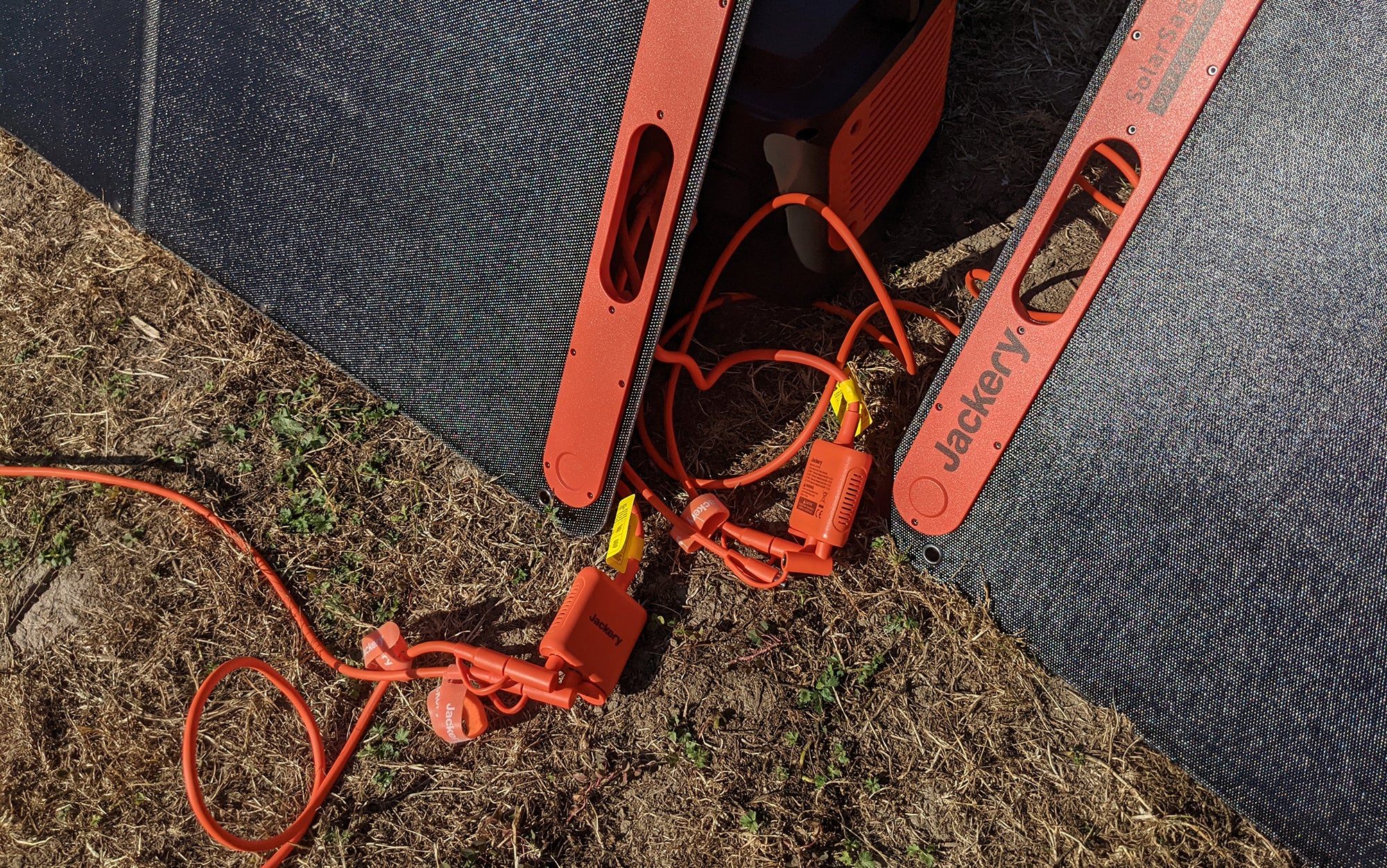
While at first glance there might appear to be a disconnect between the charging time capabilities of this setup and its battery life, it’s worth keeping in mind that conditions are not always optimal. One of the things that impressed me most about these units is the panel’s ability to generate electricity in lowlight conditions. Even in complete shade—dusk fast approaching—a single SolarSaga 200W was generating a 6 watt input.
Read our full Jackery Solar Generator 1000 Pro review for more information.
Best Value: EcoFlow Delta 2 Max + 220W Solar Panel
EcoFlow
Key Features
- Power Station Capacity: 2048 watt-hours
- Solar Panels: Two 220-watt solar panels
- 197 watts generated by one panel in direct sunlight
- Max AC output: 120 volts and 2400 watts
- Also available with one 220-watt solar panel or one 400-watt solar panel
Pros
- Comparatively low price for the potential power generation
- Power station is small in size for its power capacity
Cons
- Solar panel is comparatively difficult to set up
- Power station is 50.7 pounds, making it somewhat difficult to move
The Power Station
The EcoFlow Delta 2 Max stood out from the competition for two reasons: it’s comparative low weight and it’s comparative low price. Of the 2,000 watt-hour power stations I’ve tested, this is the least expensive as a standalone unit, making it an excellent option for anyone looking for a serious power station on a budget.
I was also impressed by its low weight—the Delta 2 Max is 10 pounds lighter than similarly powerful units—and its low volume. If you have limited space and higher power needs, this is an excellent choice.
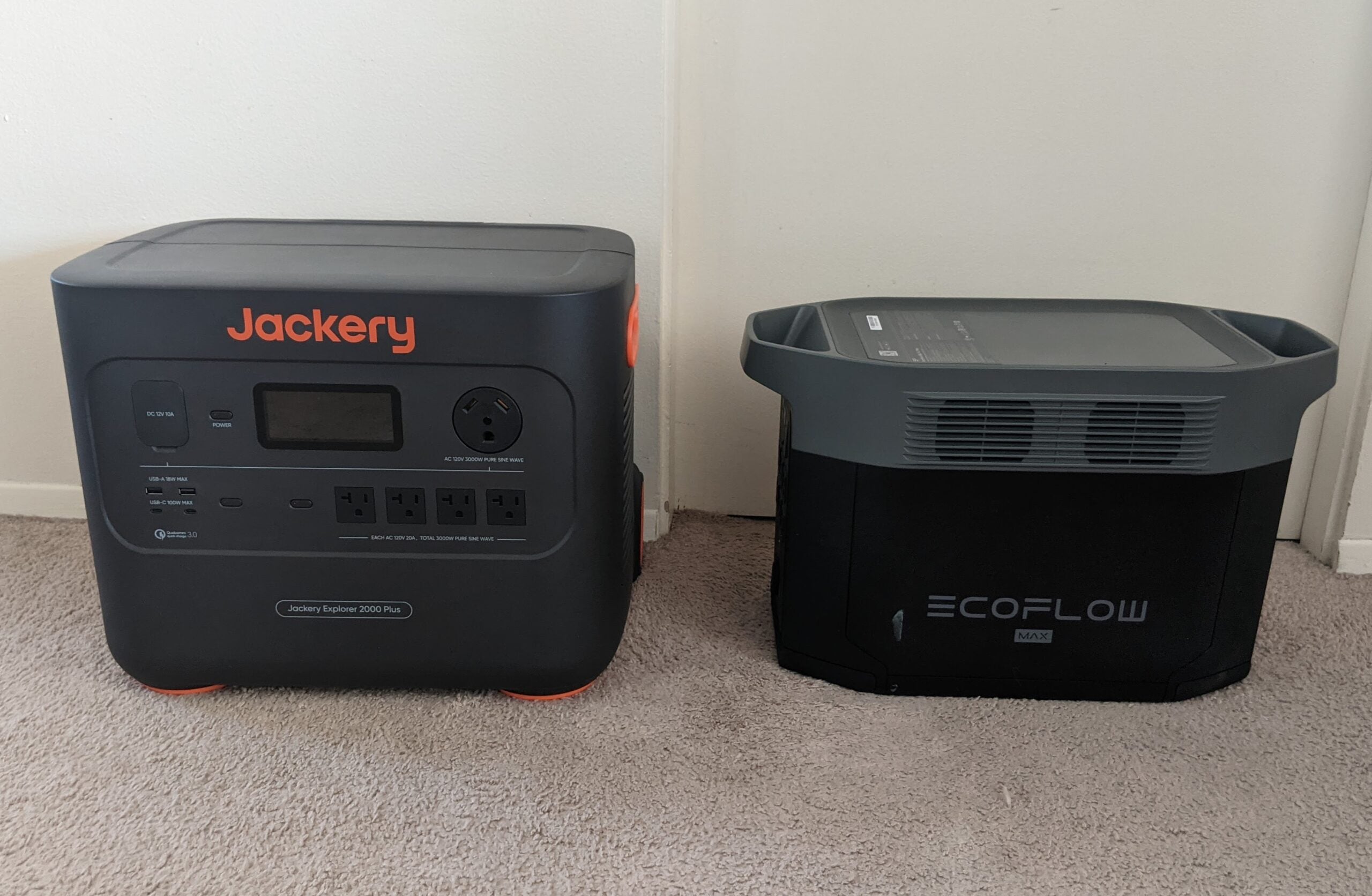
In addition to having buttons to turn on the USB, AC, and car ports, there is also a main power switch. I’ll be testing over the next several months to see if this helps to prevent power loss for individuals storing their power stations over the long term for issues like power outages.
Something different about the EcoFlow Delta 2 Max compared to other power stations I’ve looked at is that the six AC outlets (as well as the car outlet) are on the back side of the power station, with the solar and AC input ports. If you plan to mainly use the USB-C and USB-A ports, this is unlikely to cause an issue but if there are AC plugs you need to access to, you’ll to consider how you orient your power station in your home or van to ensure easy access.
While it’s worth downloading the associated app to access control features that are not available on the actual device, like auto timeouts and discharge level controls, I wouldn’t recommend relying on it over the controls on the device itself due to the amount of energy it consumes.
The Solar Panel
It’s hard to find a better value than the EcoFlow 220W Bifacial Portable Solar Panel. It produces more power for its cost and weight than anything else I’ve tested. And it’s XT-60 connector cable means it’s compatible out of the box with other power stations, including the Anker 767.
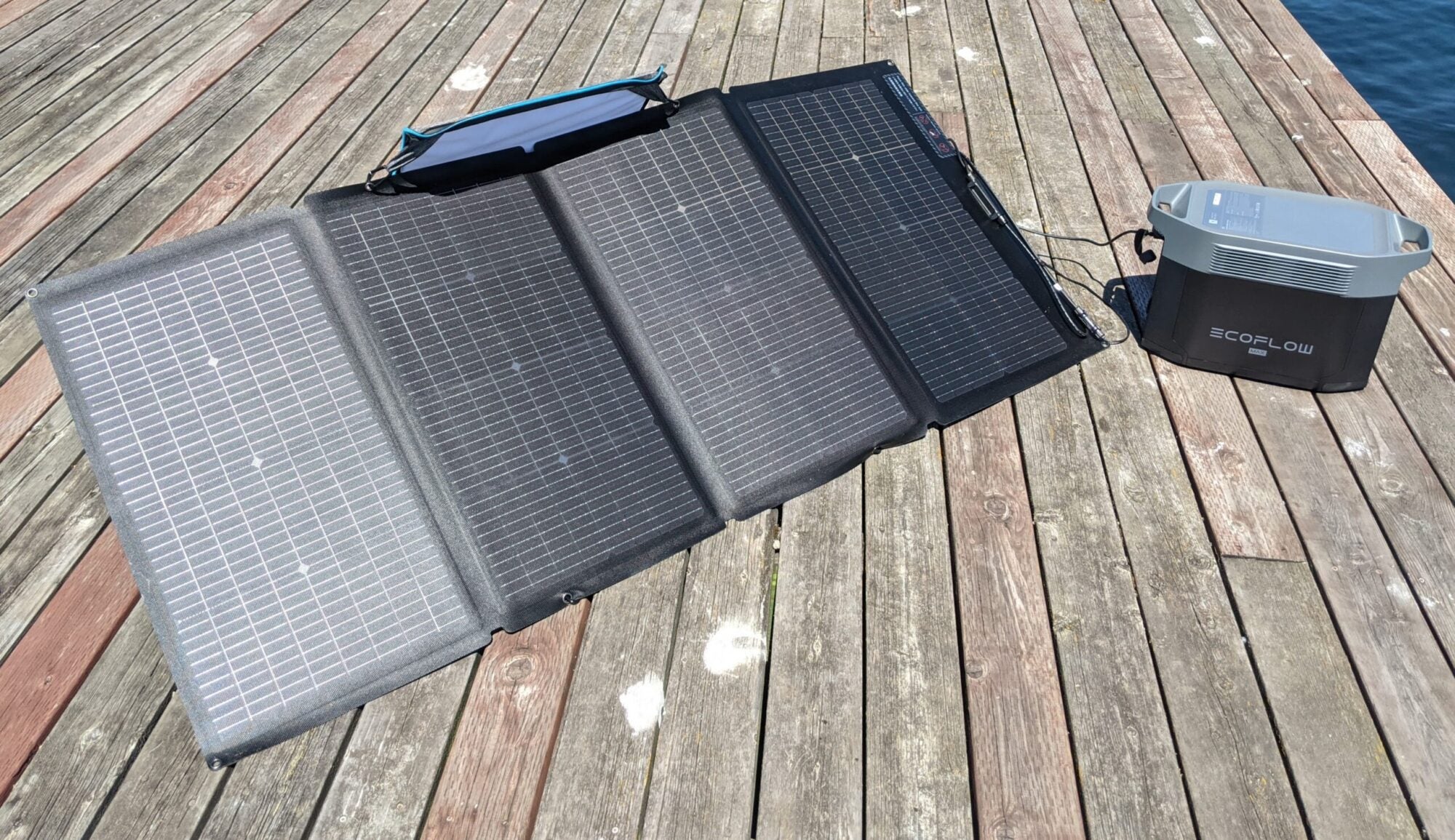
The downside to this solar panel is that it is surprisingly difficult to set up, and more fiddly to adjust, than anything else I’ve tested. While the other solar panels in this test rely on adjustable kickstand legs to optimize the angle of the panel toward the sun, the EcoFlow 220W Bifacial Portable Solar Panel takes a different approach: It uses the carrying case to support the panel.
First, four clips attach to the four corners of the carrying case. You then clip into the panel itself, angling the carrying case at a wedge to create structure to the panel. The angle of the panel can be adjusted by zipping the carrying case up or down.
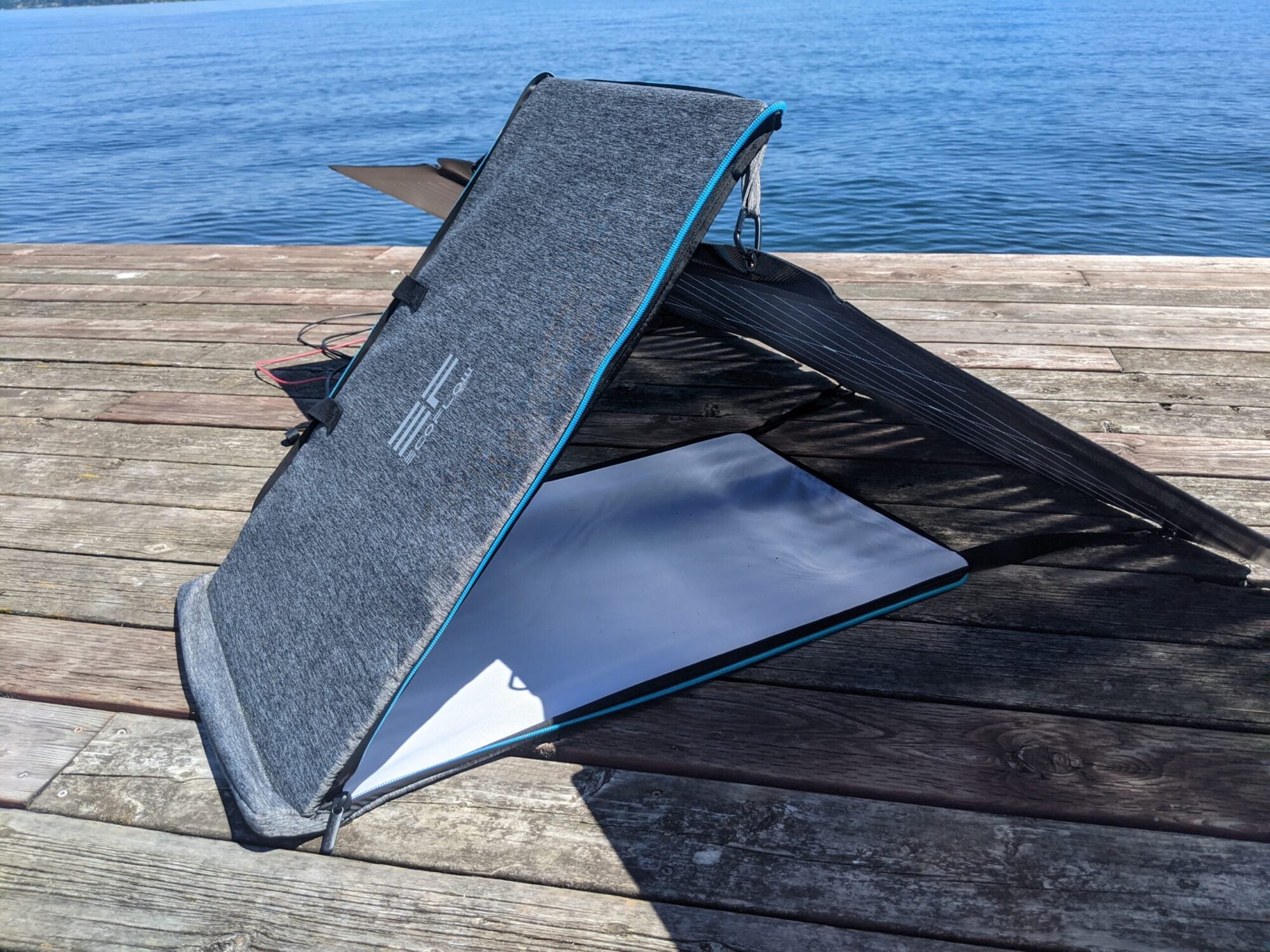
As you can see, this more or less works. I was able to set up the panel to face the sun at an optimal angle, but I found that zippering up the carrying case to adjust the angle of the panel once it was already in position was fairly difficult. If you’re used to adjusting your solar panels throughout the day to optimize the position of the sun, this could be an issue.
Best for Camping: Goal Zero Yeti 1500X + Boulder 200 Briefcase Solar Generator
Goal Zero
Key Features
- Power Station Capacity: 1516 watt-hours
- Solar Panels: One 100-watt solar panel
- 73 watts generated by one panel in direct sunlight
- Max AC output: 120 volts and 2000 watts
- Solar panels also available at 200-watt and 300-watt capacity
- Power stations available in sizes ranging from 187 watt-hours to 6071 watt-hours
Pros
- More durable exterior is a better fit for rough and tumble conditions
- Yeti power station pairs with a number of other (and better) solar panels than the Boulder
Cons
- Solar panel is fairly bulky for its power generation
- Less intuitive than other power stations I looked at
- Difficult to recharge through an AC outlet if you lose the original cables
The Power Station
The Goal Zero Yeti 1500X was one of the most complicated user interfaces to navigate, and included several details that I have mixed feelings about. The most glaring one is that when the unit is plugged into a power source, a light blinks blue continuously until it is charged, when it switches to solid blue—if you are in the same space as this unit when it is charging, this is very distracting.
Next is the three buttons above the display—which read “unit,” “light,” and “info.” Unit is fairly straightforward—it toggles the input and output measurements between volts, amperes, watts, etc. This is pretty handy if you’re curious about how much power a given device is chewing through. Next is light—on other power stations, this button turns on an actual light, which is useful if you’re trying to see what you’re doing in the evening hours. The Goal Zero, however, does not have a built-in light. This button turns on and off the display screen showing the power supply. The info button only seemed to turn on the display (not off)—it was unclear what other use this was meant to have.
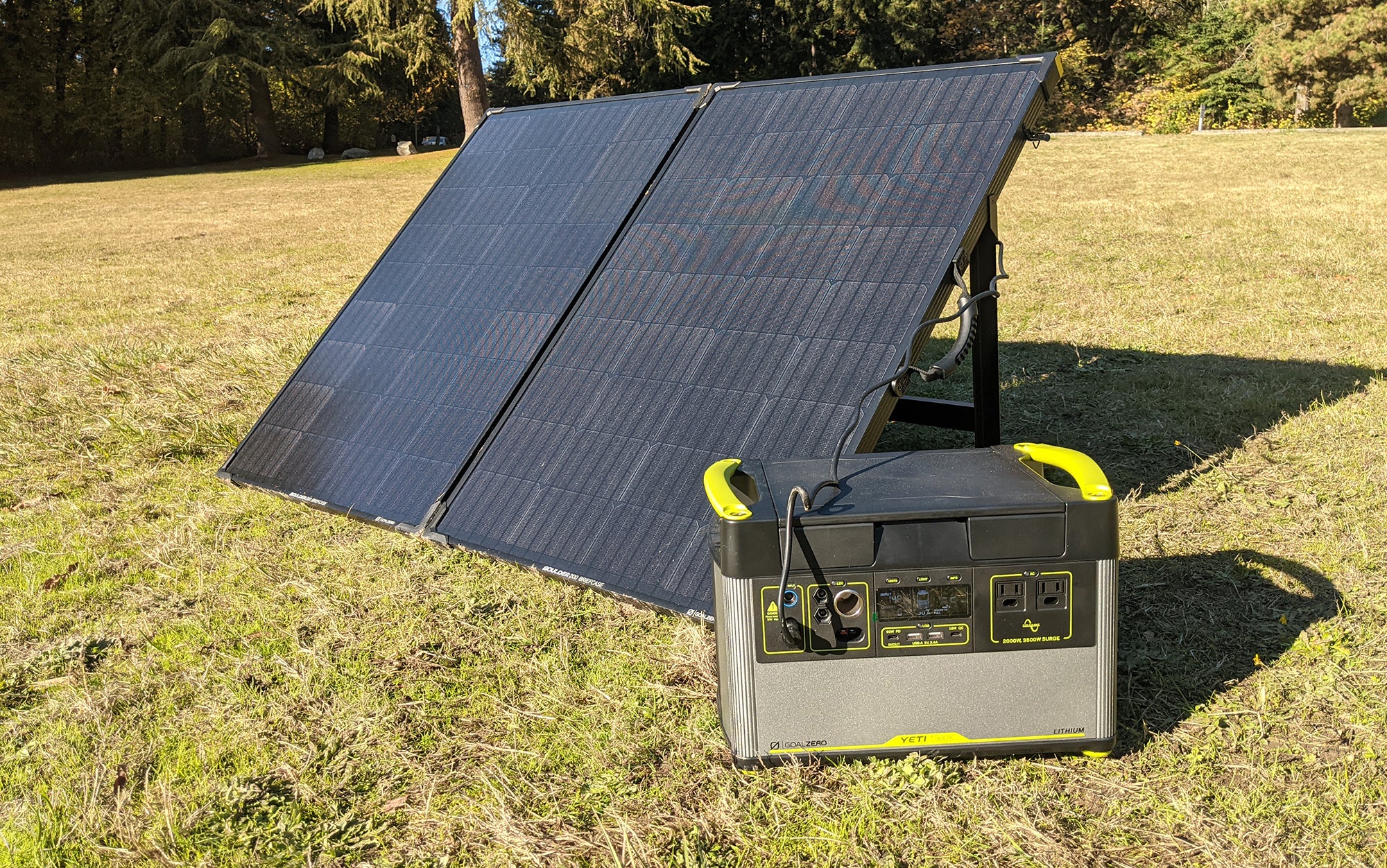
Interestingly, despite having one of the most powerful AC ports in my test, there was only space for two plug-ins. Most of the time, I suspect this will be plenty for people (and it does help to cut down on the unnecessary juice being lost out of these ports), but others might find themselves digging out a powerstrip to make up for the lack of ports.
One of the more unusual features of the Yeti 1500X is a top lid, which has storage for charging cables, or anything else you want to throw in there. This proved to be surprisingly useful while camping, when stray cables can go missing with surprising regularity.
Underneath, it also has detailed descriptions of all of the power limitations of the various ports, plus evergreen reminders about not letting your power station get wet—all in semi-legible font. Surprisingly that can’t be said for any of the power stations in my test (including the Anker 767, which despite having the largest surface area strangely didn’t include this information at all). There is also a second 8mm port under the lid as well as a 12 volt HPP output port.
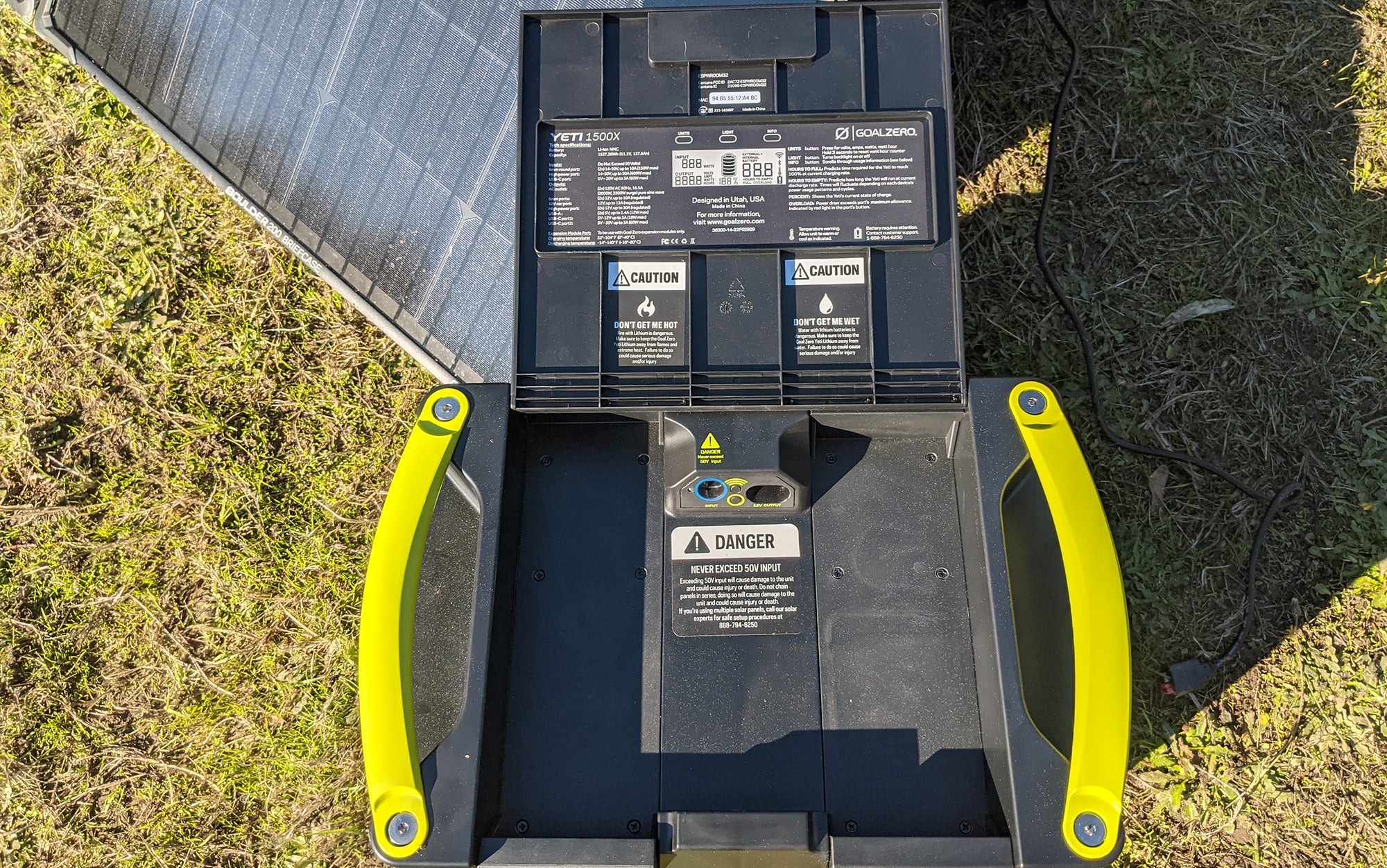
A testament to Yeti’s claim of 1,500 watts of power was my ability to actually charge the Anker 767 using the Yeti generator. It supplied 1,385 watts through a single AC port, which was higher than anything else I tested, due to this being the only combination where that was available. The maximum input capability of the Yeti 1500X is 150V from AC power, and no unit is capable of that many volts. The icon showing how much power was remaining did stay consistent.
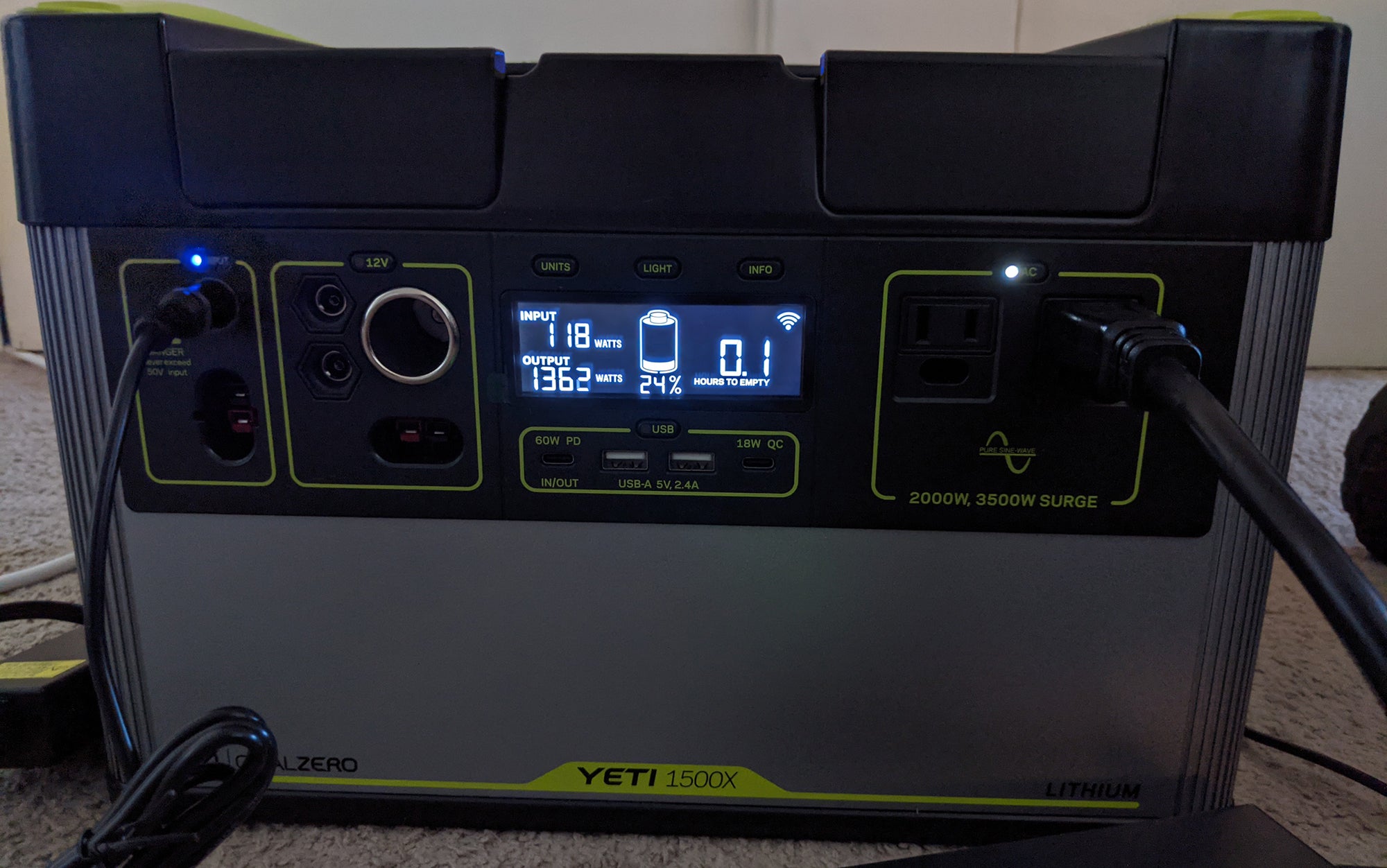
Like the Anker 767, the Yeti 1500X has an app that you can use to monitor the battery’s power usage. This app was not as intuitive to use as the Anker 767’s, requiring several more steps to get to the point where I could monitor the battery usage (it also asked me to upgrade its firmware seemingly every other time I opened it). However, once you have the whole thing set up, it provides just as much information and control as the Anker 767 app.
The Solar Panel
I tested both the Boulder 100W and the Boulder 200W from Goal Zero. These are basically the same panels (although with different ports (HPP versus DC), affecting what other power stations you might be able to pair them with), just at a different size, so whether you choose one over the other will depend on your energy needs, and your personal strength.
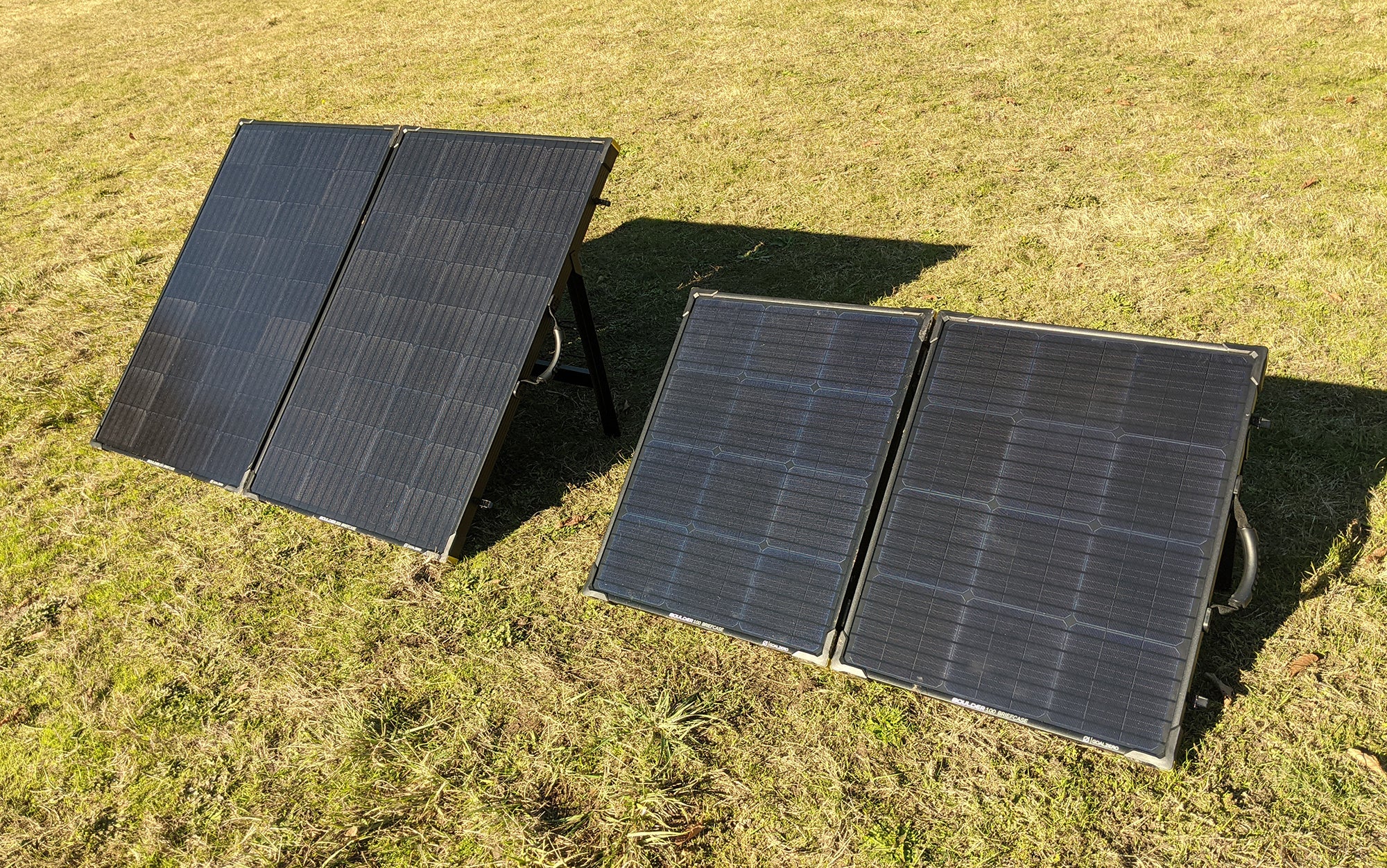
These panels are significantly bulkier and more cumbersome than anything else I tested. The likes of Jackery’s SolarSaga series and the Anker solar panels are a bit like someone took a backpacking solar panel and just blew it up to 20x the size. The Boulder series from Goal Zero looks like a solar panel off your house that’s shrunken down to something you could throw into the back of your car.
Both the 100W and the 200W solar panels come with carrying cases, which due to the placement of the zippers are kind of a nuisance to use. But use them you should because the way these panels fold up leaves the solar cells on the outside of the package, rather than on the inside (like the rest of the solar panels in my test). While the 100W panel was heavy, but otherwise easy enough to move thanks to the inclusion of a comfortable handle on the long side of the folded-up panels, the 200W had a tendency to drag across the ground (at least this was my experience, as a 5-foot, 5-inch individual), forcing me to lean to one side as I walked. Did I mention that these panels were heavy? At 42 pounds, the Boulder 200W is extremely heavy.
While the Boulder solar panels were reasonably easy to set up, the way the legs are designed gives you fewer options for maximizing the angle of the sun in the winter months, when it’s lower to the horizon. This showed during testing, when the panels only pulled in 73 watts for the 100W panel, and 143 watts for the 200W panel.
Best for RVs: Jackery Solar Generator 2000 Plus
Jackery
Key Features
- Power Station Capacity: 2043 watt-hours
- Solar Panels: Two 200-watt solar panels
- 184 watts generated by one panel in direct sunlight
- Max AC Output: 120 volts and 3000 watts
- Also available with one 200-watt solar panel
- Also available with a 2,000Wh expansion battery
Pros
- Easy, intuitive power station interface
- Comes with best-in-class solar panels
Cons
- Heavy
- Expensive
The Power Station
If you’re already a fan of Jackery’s simple and intuitive power stations (we are), then upgrading to a model that pairs with your adventure rig is a no brainer. This, along with the Anker 767, is one of two power stations I’ve looked at that features a plug for an RV and stores enough energy to power the average setup for a day. If you’ve been looking to upgrade to a quieter generator for camping, then this is an easy choice.
During testing, the sheer size and weight of the Jackery Explorer 2000 Plus was a bit of an issue. If you have back problems and don’t need this kind of power, I suggest looking elsewhere. While there is a handy telescoping handle that allows you to pull it over flat distances fairly easily, you’ll likely still need to pick it up periodically to get it into your car. The telescoping handle was also so short that I had to lean over when pulling it along.
While the Jackery Explorer 2000 Plus comes with an app, I was unable to get it working during testing after multiple attempts.
The Solar Panel
See the Best Overall Jackery Solar Generator 1000 Pro writeup for my take on the best-in-class Jackery SolarSaga 200W panels.
Most Maneuverable: Anker Solar Generator 767
Laura Lancaster
Key Features
- Power Station Capacity: 2048 watt-hours
- Solar Panels: Two 200-watt solar panels
- 158 watts generated by one panel in direct sunlight
- Max AC Output: 120 volts and 2400 watts
Pros
- Heavy-duty wheels excel on tough terrain
- RV plug
- Fully featured app
Cons
- Heavy
- Power station tends to leach power over time
The Power Station
While several power stations that I looked at incorporated handles for ease of transport, the Anker 767’s were by far the most useful. While the Jackery’s telescoping handle never extended far enough to allow me to stand upright, it was comfortable to pull the Anker 767 by its handle for short distances. This included over very muddy ground during my initial test. If you regularly move your power stations more than 50 feet a time, then the ease and comfort with which you can maneuver the Anker 767 makes it a smart choice.
During testing, this unit was more than capable of taking on every device I could throw at it without blinking. If you’re looking for a unit to power your phone during a power outage, this is definitely overkill. The AC outlets alone are capable of managing 2400 watts—your average fridge is only using 250 watts or so at a time, so this is really more than enough for most purposes.
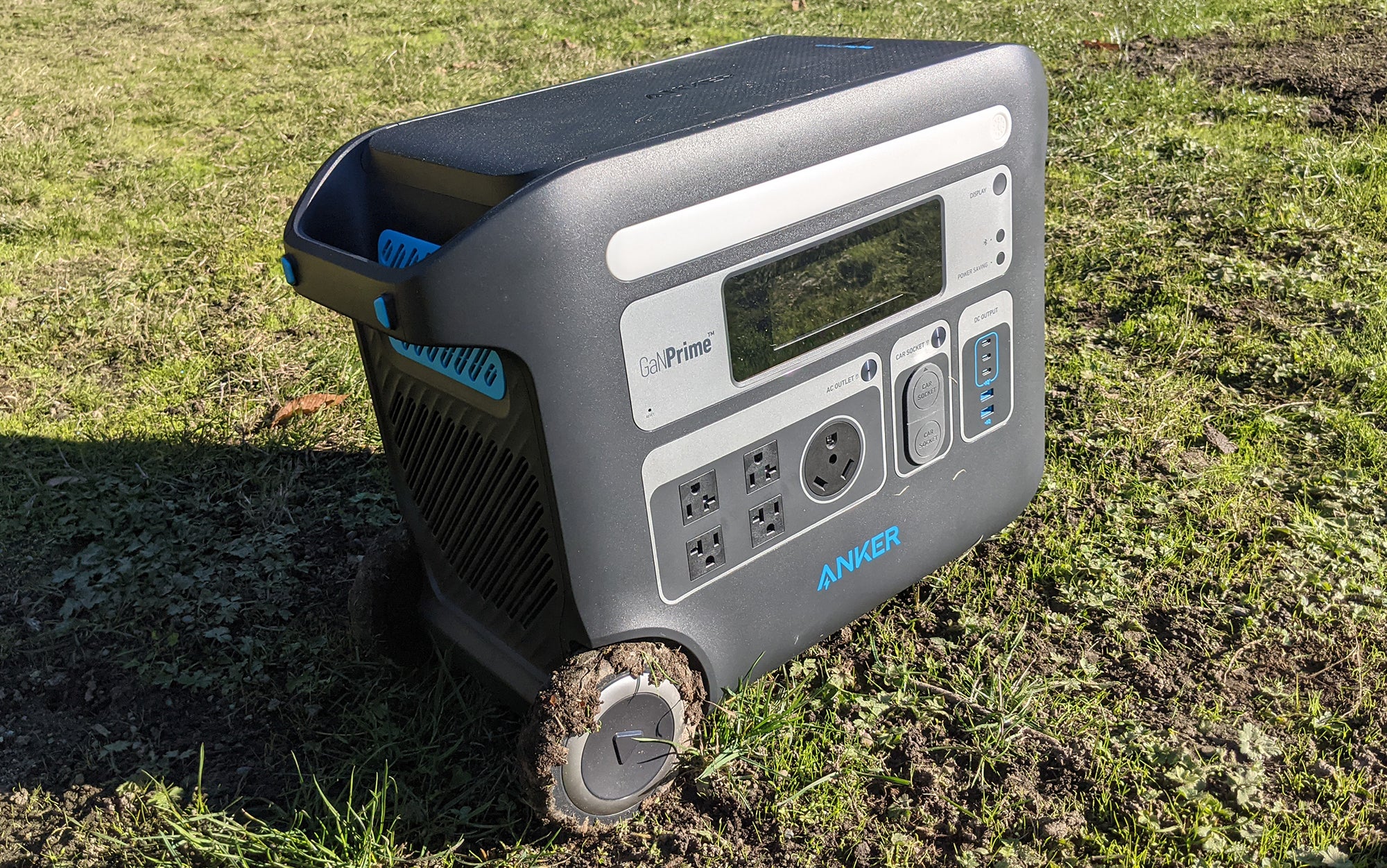
In fact, it has so much power that I didn’t come anywhere near maxing it out during testing. (Strangely, this unit only has three AC outlets compared to the six on the Anker 555 unit, which has half the watt-hour capacity.) Along with the Jackery Explorer 2000 Plus, this was one of two power stations that came with an RV plug, fitting, since the total capacity of the Anker 767 is about equal to a day’s worth of power usage by an RV.
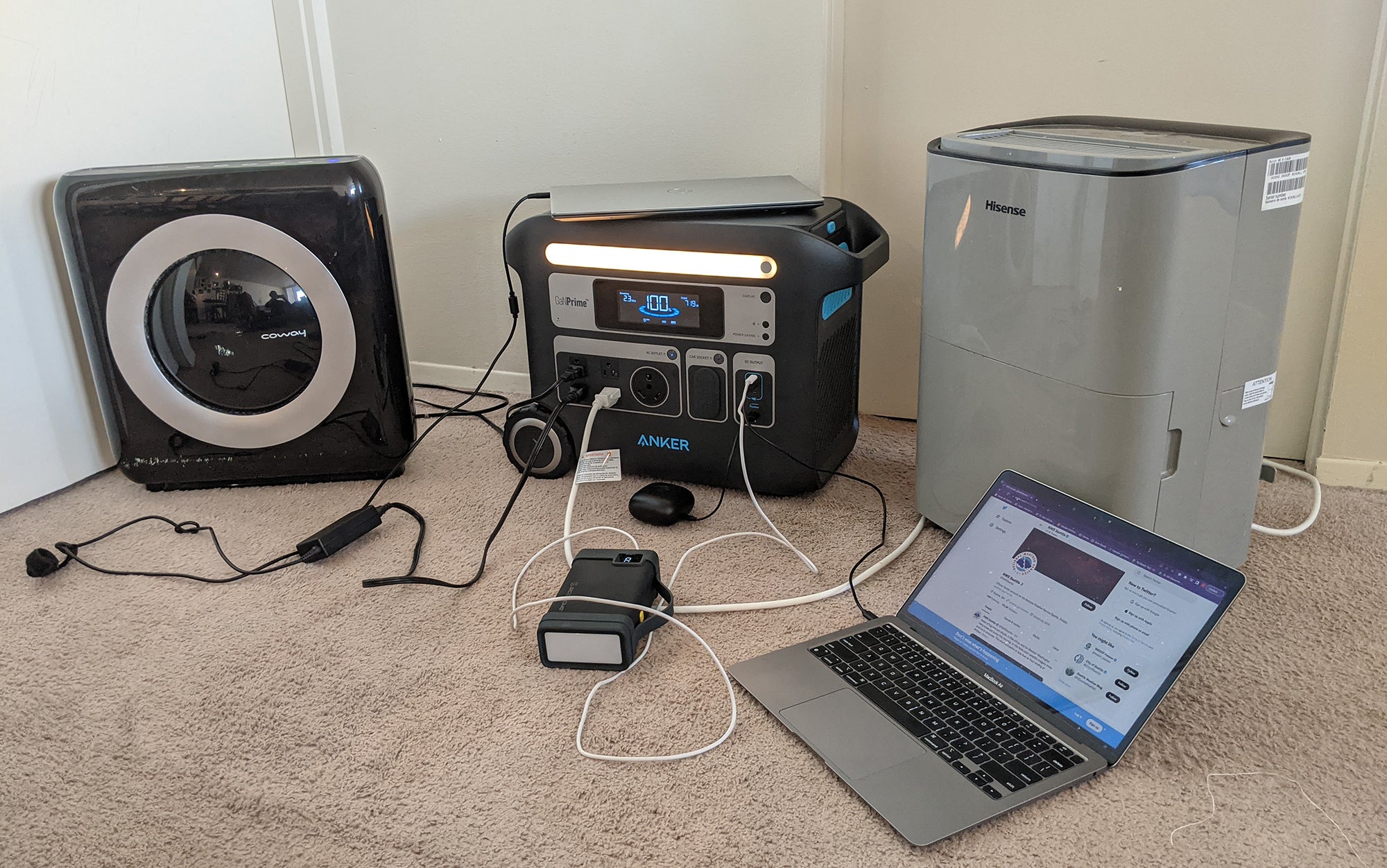
My favorite detail about this power station was the app. While testing the best solar generators, I went outside pretty often to check if everything was working properly. That gets pretty annoying after a while. But with the Anker 767, I could just open the app up and check to see how much power was being generated (or not). In addition to showing me the current power capacity of the unit, it also gives you the ability to turn off and on the AC, USB, and DC ports, as well as turn on the light on the side. It also shows you the internal temperature of the unit.
During ongoing testing of this unit, I observed that it is not as effective at retaining a charge long-term as other power stations in this test. I found that it lost a percentage or two of power every couple days even when not in use.
The Solar Panel
The Anker 531 Solar Panel was the simplest to use of the larger solar panels I looked at. I liked that it didn’t have a separate carrying case to mess with, and a simple carabiner and mesh bag combo did the trick to stash the relevant cable and ensure it didn’t become separated from the larger unit. Like all of these kickstand solar panel setups, it was a little cumbersome to use, but extra reinforcement on the three kickstand legs were useful to an extent when adjusting the panel to a lower angle.
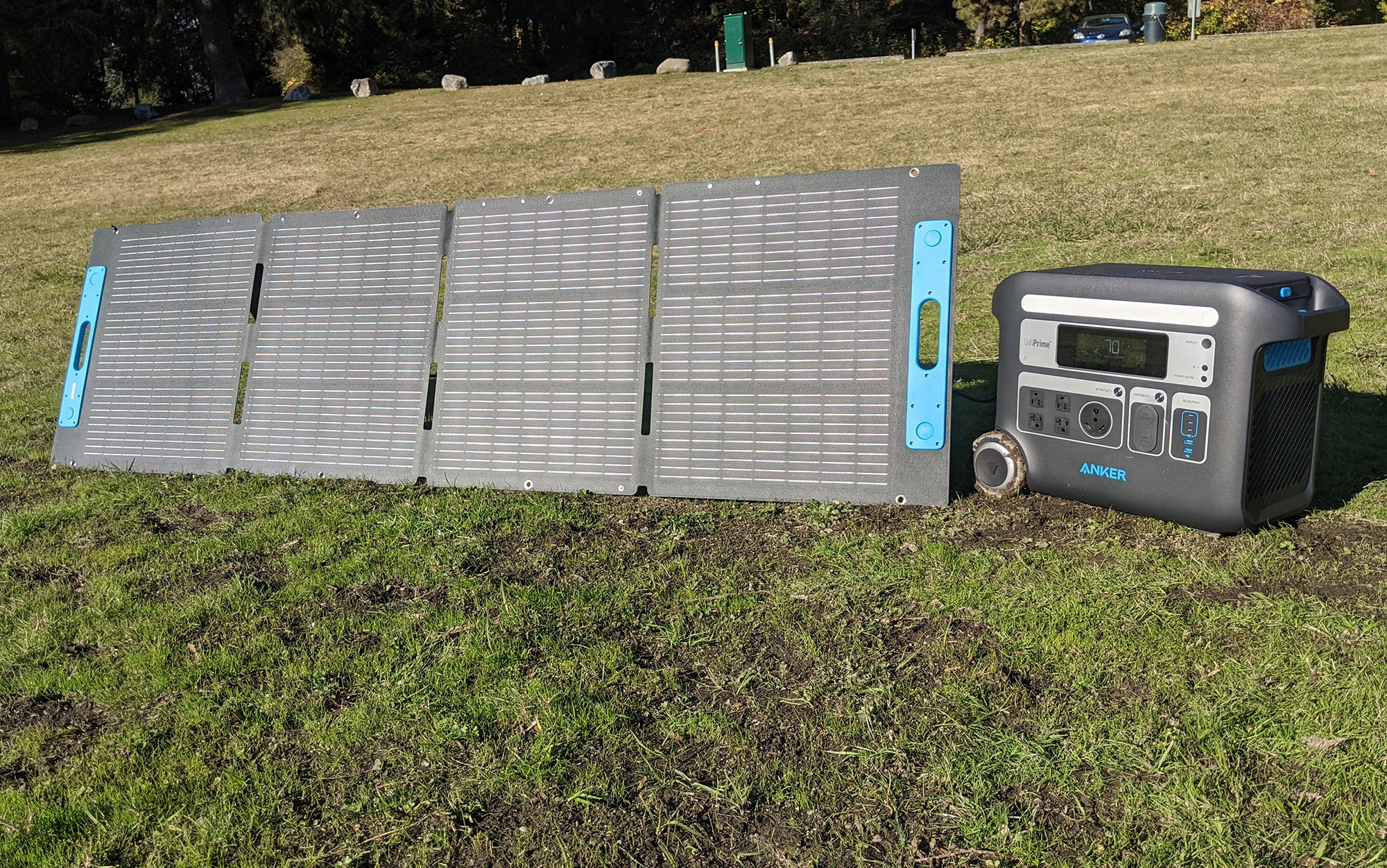
While this solar panel isn’t quite as powerful as the Jackery SolarSaga 200W, it easily produced over 75 percent of its 200-watt capability—and the Anker 767 can support up to five of these chained together. Strangely, this panel did not have the same sundial component that the 100W Anker 625 did. However, after I set up the Anker 625 panel, I adjusted the Anker 531 panel to match its angle and immediately saw a 23-watt difference in the power input. Hopefully, Anker will simply add this accessory onto the 531 model in the future, but in the meantime, you can purchase a clip-on sundial separately.
Read our full review of the Anker Solar Generator 767 for more information.
Most Portable: BioLite BaseCharge 1500 + Solar Panel 100
Biolite
Key Features
- Power Station Capacity: 1521 watt-hours
- Solar Panels: One 100-watt solar panel
- 70 watts generated by one panel in direct sunlight
- Max AC Output: 110 volts and 1200 watts
- Also available with a 622Wh power station
Pros
- Lightest unit I tested
- Power station is easy to use
- Power station is compatible with the Goal Zero Boulder 200 (up to two)
Cons
- No bundle option available
- Solar panel was the weakest in my test
The Power Station
Like the Jackery Explorer 1000 Pro and the Anker 555 PowerHouse, the BioLite BaseCharge 1500 has a sleek and streamlined user interface that is easy to read and understand. The display panel shows the percentage of your battery left, the estimated number of hours it will take to either run through or finish charging the battery, the watts coming into your unit, and the watts going out. It also shows you the number of watt-hours the unit has used in total—watching that number was a bit like watching the odometer tick up on your car. Not super useful daily, but a nice thing to know in the aggregate.
There are separate buttons to turn on the ports for USB, DC, and AC power, as well as a button to turn on the display. (A second button allows you to reset the display of how many watts you’ve used, useful if you are interested in getting an accurate read on your total power needs).
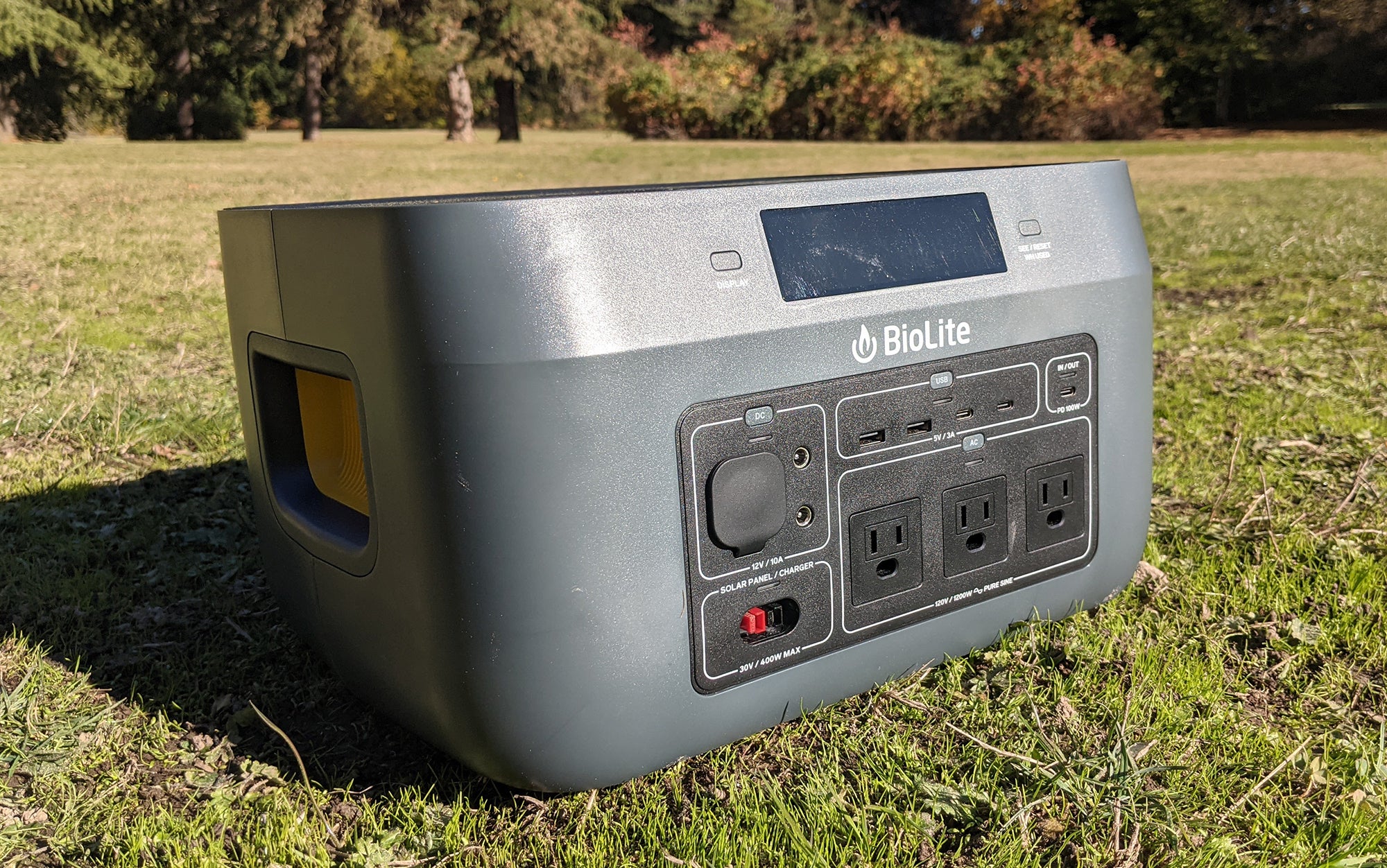
There were three details that made the BioLite BaseCharge 1500 stand out next to the competition:
- A wireless charging option on top of the unit.
- The choice to put the input port on the front of the unit, as opposed to the back. During testing, I found that the front configuration was easier when plugging in solar panels.
- This power station is surprisingly lightweight, especially compared to the Yeti 1500X, which has a comparable watt-hour capacity. If you plan to move your power station from room to room, this is a no-brainer.
During testing, the BioLite BaseCharge 1500 was one of the few power stations where the “hours to empty” estimate kept jumping around. It probably accurately reflected the change in power needs of the bigger devices, but was confusing to look at and made the time estimates less useful than they would have otherwise been. (The percentage estimate of the amount of battery life remaining, however, stayed fairly consistent.)
The Solar Panel
While the BaseCharge 1500 ended up being one of my favorite power stations, the BioLite Solar Panel 100 was one of the least powerful solar panels in my test. However, it did incorporate a sundial, which helped me to situate the panel at the right angle to maximize the energy output.
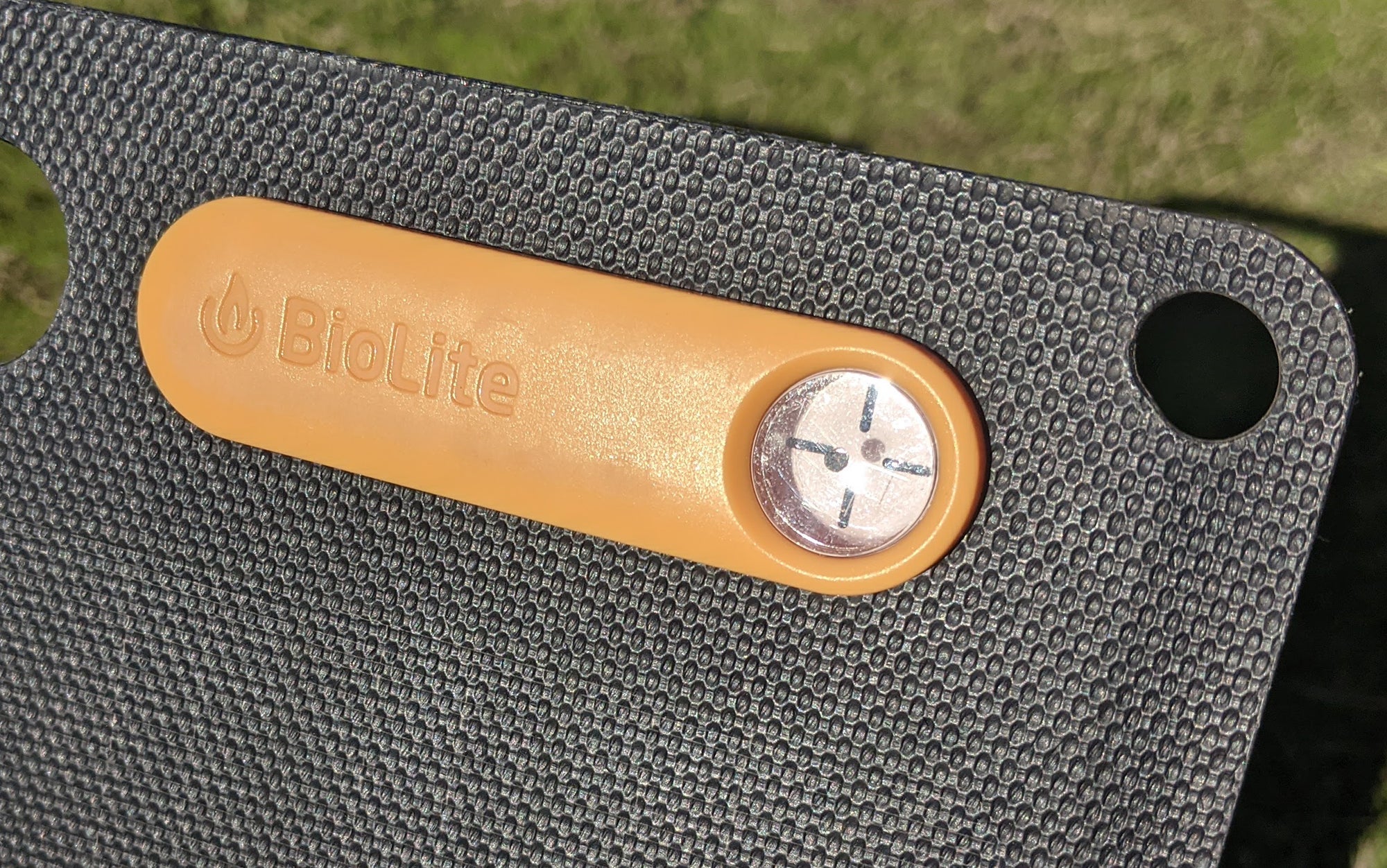
If you choose to go with a BaseCharge 1500, it’s worth considering pairing it with a Goal Zero Boulder 200W, a pairing that proved successful during testing.
Best Weather Resistance: Bluetti AC60 + Bluetti PV120 Solar Panel
Bluetti
Key Features
- Power Station Capacity: 403 watt-hours
- Solar Panels: One 120-watt solar panel
- 110 watts generated by one panel in direct sunlight
- Max AC Output: 120 volts and 600 watts
- Also available with a 800Wh expansion pack
Pros
- Dust and water resistant (power station rated to IP65)
- Compact and powerful solar panel
- Wireless charging potential
- Longest warranty of everything I looked at
Cons
- Power station had functionality issues when it ran down to zero percent charge
The Power Station
Something you see over and over when you’re looking at the fine print on power stations are reminders to protect them from the elements. Rain, dirt, dust: all these can wreck havoc on the ports and inner workings of these devices. For those of us that love the outdoors and that plan to use these devices camping or overlanding, this is a bit of a conundrum.
The Bluetti AC60 is the only power station I’ve tested that is rated to IP65. That means, when the ports are covered, it’s completely protected from dust getting inside. Just as important, it’s also able to withstand water coming at it from any direction—useful when an unexpected rainstorm hits. (Note that it’s not water resistant to the point that you can drop it in a lake.)
During testing I found that when this power station ran out of juice I was not able to recharge it using a wall outlet, only the solar panel. The second time the power station ran out of juice I was not able to recharge it at all. Bluetti says this is an issue only with their preproduction models; further, their six-year warranty would suggest it should last for many many cycles before running down entirely. However, I would not recommend purchasing this power station if you plan to keep it in storage for long periods of time without checking to see if it is still holding a charge.
The Solar Panel
The Bluetti PV120 Solar Panel is one of the best solar panels I’ve tested. Despite being a similar size and price compared to the Anker 625 (a 100-watt solar panel), it produced 16 more watts during testing. Its kickstands had snap buttons at the adjustment points, making it simpler to find the correct angle than on solar panels that liked that feature. It also has snaps that hold the package together when folded up, eliminating the need for an extra carrying case. This has become my new go-to panel when I head out camping due to its space savings and power generation potential. Even better, since its DC-compatible cable pairs with the Goal Zero Yeti series, I’m able to use it with my favorite power station for camping.
Best Budget: Anker 555 Solar Generator
Anker
Key Features
- Power Station Capacity: 1024 watt-hours
- Solar Panels: two 100-watt solar panels
- Energy Created By One Panel In Direct Sunlight: 94 watts
- Max AC output: 110 volts and 1000 watts
- Also available with a 1229Wh power station and three 100W solar panels
Pros
- Solar panel has an incorporated sundial
- Plenty of AC outlets for the whole family
Cons
- Max power station output is 110V
- XT60 port on the solar panel needs an adapter to be compatible with the power station
- Power station will lose its charge if left in storage long term
The Power Station
If your family has a bevy of devices that seemingly all need to be plugged in simultaneously, you are in luck with the Anker 555 PowerHouse. It was the only unit in my test that boasted six AC outlets, as well as three USB-C outlets and two USB-A outlets. There were so many outlets that it was actually hard to find enough things to plug into it in my home—I ended up with an air purifier, sun lamp, two fans, a laptop, and a battery pack plugged in. The 555 PowerHouse had no problem with this—it barely used a third of its total output power. If your family has a bunch of devices that simply must be charged at all times, then this is a great option.

Note that this would not be the best choice for someone looking for backup power for their refrigerator, as its 1,024 watt hour capacity was on the smaller side in my test and only has up to 110-volt output. Over time, it’s also become apparent that this powerstation loses stored power more quickly than similar units. Plan to check at least once a month to confirm that it still has sufficient juice for your family’s needs.
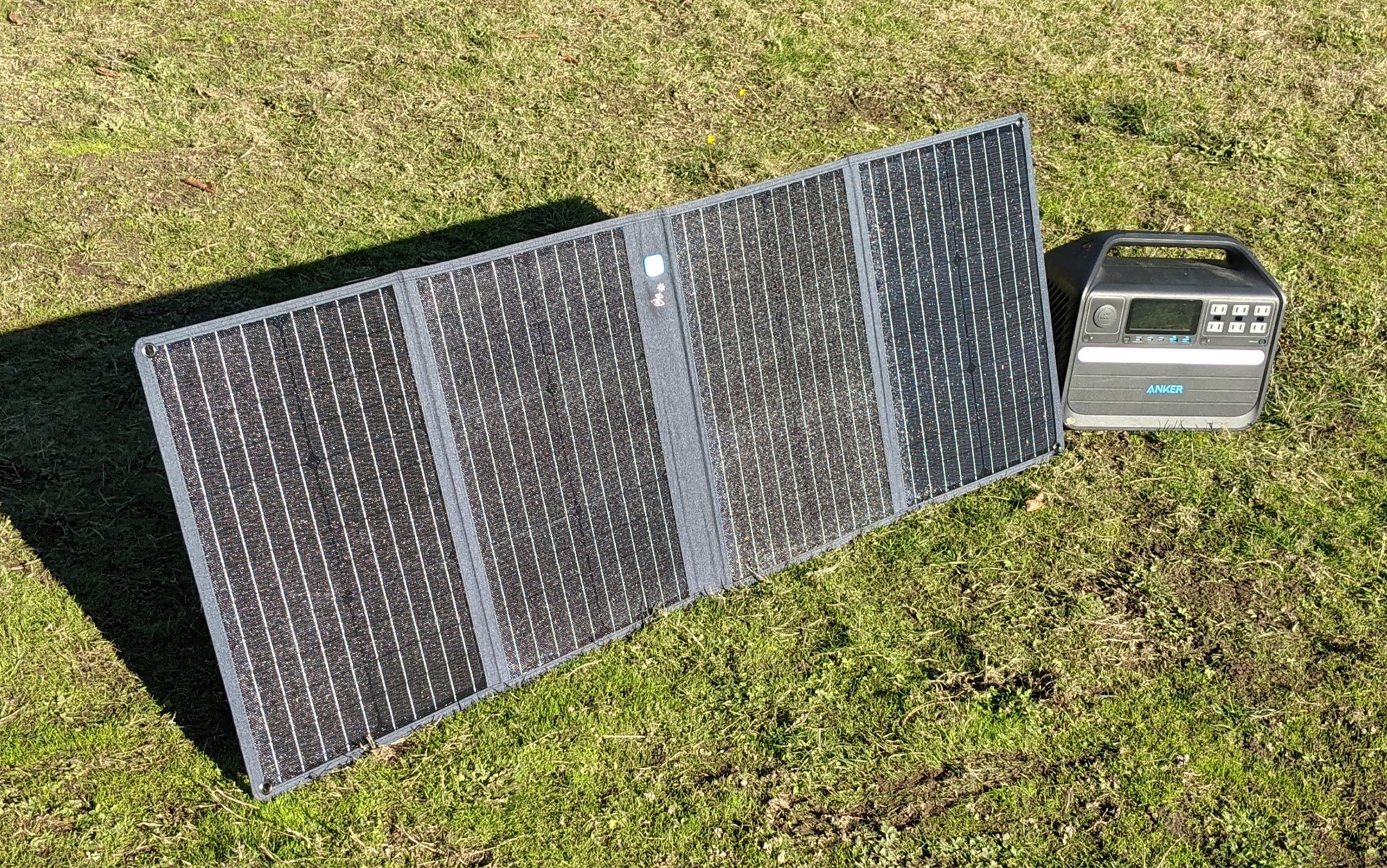
Something else I liked about this unit was the utility—and comparative simplicity—of its charging abilities. It has one DC input port in the back and a USB-C 100W port that plays double duty with input and output. As someone who struggles to keep track of the sheer number and variety of cords that are always floating around, I appreciated the ability to recharge this unit without tracking down the original cord.
The Solar Panel
The Anker 625 was easily the best of the 100W panels I tested. It was one of the best solar panels for camping I tested back in the spring, and it’s still one of my favorite pieces of gear. It even beat out the 200W Jackery SolarSaga if you consider that this panel generated 94 percent of its claimed output, while the Jackery only managed 92 percent. Part of this is the inclusion of a sundial in the top center of the panel, which helped me align the panel correctly during setup. This sundial is such a useful feature, that after I had correctly aligned the Anker 625, I went back and adjusted all the other panels to match it—an instant uptick in power was measured. Two of these panels is a great choice for recharging a power station the size of the 555 PowerHouse.

I’ve been testing this panel for a while—unlike some of the others in this test—and in that time I’ve noticed that it’s picked up a bit of scuffing along the edges of the fabric backing. While not ideal, this has not impacted the functionality of the unit in the slightest.
The Rest of the Field
I tested the Zendure SuperBase V6400 paired with their 400W Solar Panel as part of my spring testing. This unit is massive: It comes saran-wrapped up on a pallet. While it does have wheels and a handle, that does not make it portable. It took a merciful delivery driver and myself an hour to get it up three floors to my home. This is not a realistic choice for overlanders or campers. Unless your rig has a ramp and a ton of excess of space I wouldn’t even consider it. Picture a 45 liter Yeti Tundra cooler that weighs 130 pounds.
There were also problems with the Zendure SuperBase V6400 itself. The unit I had did not have functioning USB-C ports. I also noted that simply leaving the AC ports on overnight resulted in a 10 percent drop in the unit’s overall battery; surprising, given how many watt-hours it holds. Zendure confirmed that this is expected functioning of the unit. One aesthetic note is that the latches for some of the port covers did not close correctly. The Zendure 400W Solar Panel was another story: It was surprisingly lightweight and easy to use given how much juice it generated. I only wish I could have paired it with a different power station.
I strongly recommend heavily researching this unit before making a purchase, as you may be stuck with it. It requires original shipping materials (which I no longer had) and a pallet to move it. Local shipping companies were unable to supply one (at one point, Zendure suggested I purchase a pallet). I was unable to return this unit and it ultimately found its way to an acquaintance who works in IT. They’ve rigged it up to be the sole source of power for their bedroom, including servers and computers. They’re considering trying to use it as a source of power for their Tesla. If that sounds like what you’re hoping to do with your solar generator, then by all means give the Zendure package a look. But if you’re more interested in outdoor life (we are), then give it a pass.
How to Choose the Best Solar Generator for You
Your Budget
Solar generators can be a pricey investment. Before you start looking at the various power stations and solar panels and package deals available, it’s important to know how much you are willing to spend. Underspending on a power station can result in inadequate power needs in the case of a power outage or while adventuring off grid.
Your Power Needs
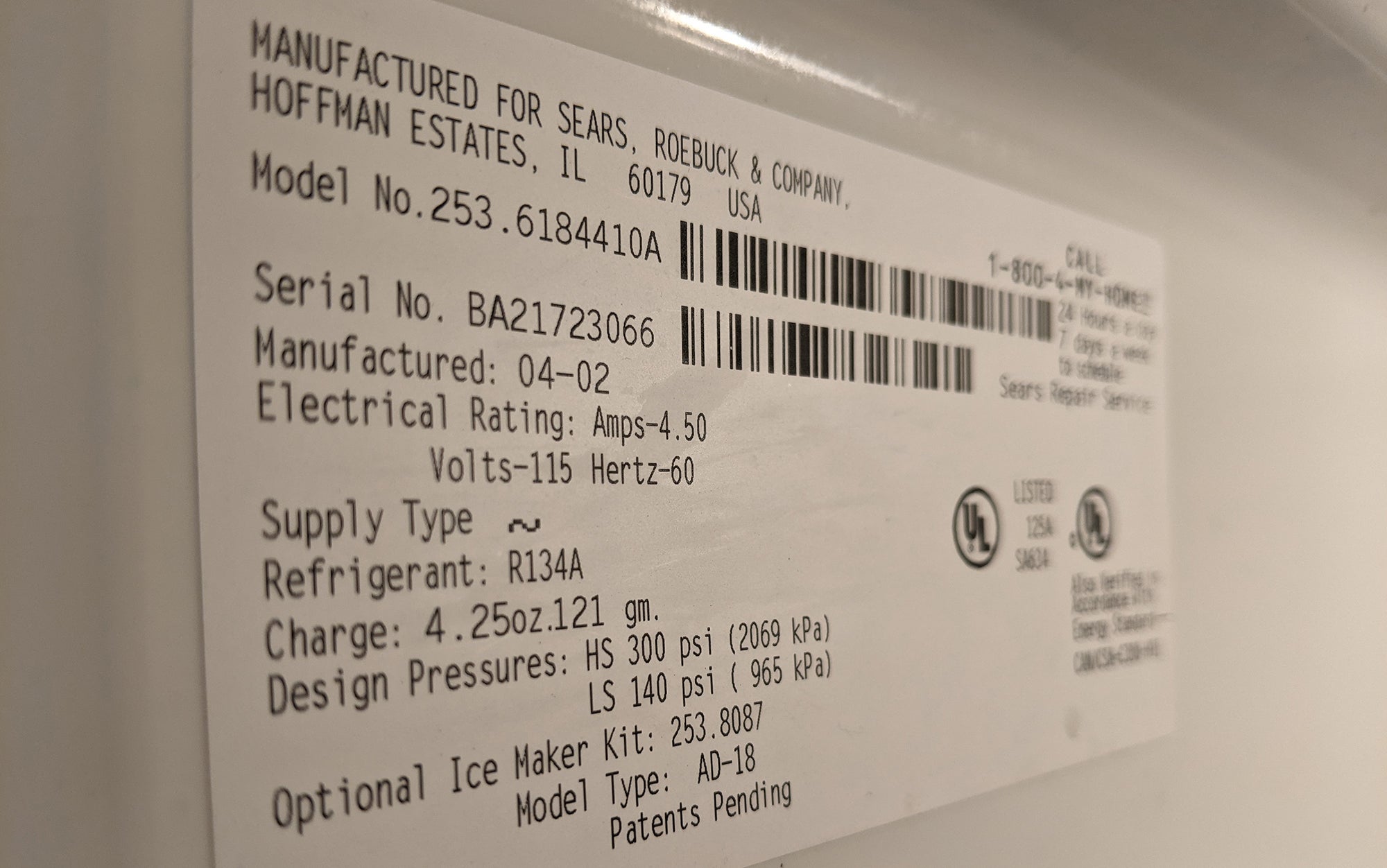
This is the big one. For the power station, there are two main numbers you’ll want to focus on: voltage and watt-hours. First figure out what the most power-hungry appliance you’ll be powering is (likely a refrigerator) and check its voltage requirements. Then look for power stations that can meet those voltage requirements (typically out of the AC outlets). Next consider how many watt-hours of power you’ll want.
Estimating this is as much art as science, given that the power needs of larger appliances vary considerably—during testing I saw the AC output regularly jump between 250 watts to over 1,000 watts. It’s also tough to know exactly how much you’ll be using each appliance in a power outage event—will you need to power a space heater during winter, or an air conditioner in the summer months?
A good rule of thumb is that if you are only looking for a solar generator to keep your laptops and phones charged, a 1,000-watt-hour solar generator will give you more than enough juice. If you’re looking to power a full-size refrigerator, then you should buy the largest unit you can comfortably afford. If you are looking to power your entire home via a solar generator, then it’s worth spending the time to calculate your full array of power needs to figure out what you’ll need to make that happen.
Solar panels are a bit simpler. The first step is to figure out how many hours a day you want to spend charging your power station. If you’re overlanding in the desert, you might be willing to spend all day with your power station plugged into its corresponding solar panel; as such, you can get by with lower wattage output. On the other hand, if you expect to be recharging your power station for brief periods of time, perhaps during a wintertime power outage, you’ll want the highest output panel you can get, or even an array of panels, so that you can recharge your power station as fast as possible. Keep in mind that a solar panel’s output will be affected by both the season and the weather, so plan accordingly.
Portability
Power stations are often heavy, and solar panels can be unwieldy. Purchasing a larger unit than is necessary for your needs can reduce the utility of your overall setup—after all, if you hesitate to pull out your solar generator because of what a pain it is to set up, then it’s not doing you much good after all.
FAQs
Q: Are solar-powered generators worth the money?
Solar-powered generators are expensive, especially if you are looking to power high-energy appliances, but for many people the peace of mind they bring makes them more than worth the money. Also, compared to gas-powered generators, solar-powered generators are quieter, lighter, and are free to recharge (no fuel costs), and so for many people are less expensive over the long run. The key is making sure you select a unit that can hold and generate enough power to run whatever you plan to plug in for an extended amount of time.
Q: How do I choose a portable solar generator?
While estimating your energy needs during a surprise blackout can be tough, if you are shopping for a solar generator for a car camping, RV, or overlanding setup, then you’ll be able to hone in more closely on your exact requirements. That’s because the manufacturers for these products assume that most individuals will be using them off the grid, and can provide reasonable estimates of how much juice you’ll need to power them for a set amount of time.
Q: Can a solar generator run a refrigerator?
Yes, some solar generators can run refrigerators. There are two numbers that you need to line up when choosing the right solar generator for your needs: volts and watt-hours. First, look to see what the voltage requirements are of your refrigerator—you can typically find this on a sticker on the inside of your fridge.
Then choose a power station that can meet the voltage needs of your refrigerator. The watt-hours (Wh) essentially represent the size of the battery in your power station —the larger the battery, the longer it will power your fridge for, and the more it will cost. Typically, a 2,000Wh power station has enough juice to run your fridge for a day, but that depends on the power needs of your refrigerator, including the ambient air temperature and any add-ons running in the background. If you expect to have a solar generator powering a refrigerator for an extended period of time, choose larger, more powerful solar panels to pair with it, so that your refrigerator spends less time unplugged while the power station is recharging.
Q: Can a solar generator run an air conditioner?
Yes, a solar generator paired with a power station can run an air conditioner. One thing you have to keep in mind is that the air conditioner’s power needs must match the power output of your power station.
Why Trust Outdoor Life?
Since 1898, OL has been a leading authority in testing and reviewing hunting gear, fishing tackle, guns and shooting equipment, and much more. We have more than a century-long history of evaluating products, and we’re now bringing that expertise to online reviews. Our editors are experienced outdoorsmen and women, and most importantly, we’re trained journalists. We prioritize field testing and objective data when reviewing products. We conduct interviews with gear manufacturers and engineers as well as outdoor experts so that our readers have an understanding of how and why a product works—or doesn’t.
Advertising does not influence our gear reviews and it never will. While we always focus our coverage on standout products—because we want our readers to be aware of the latest and greatest gear—we also cover the flaws and quirks of any given product.
Final Thoughts on the Best Solar Generators
After testing the best solar generators for over a year—both individually and in tandem—it’s clear that the Jackery Solar Generator 1000 Pro (or 2000 Pro, depending on your power station needs) is one of the best setups available. While the Jackery combo can often be had on sale, if you’re looking to spend less money overall, the EcoFlow Delta 2 Max is a great option if you’re comfortable with a slightly more complicated setup. If you have a strong idea of exactly what your energy needs are, check out the sheer number of options offered by Goal Zero—panels that vary from 100W to 300W and power stations that go up to 6,000 watt-hours. Individuals and families on the go will appreciate the portability of the BioLite duo, while overlanders will benefit from the juice and portability of the Anker 767 power station and 531 Solar Panel.
- Best Overall: Jackery Solar Generator 1000 Pro
- Best Value: EcoFlow Delta 2 Max + 220W Solar Panel
- Best for Camping: Goal Zero Yeti 1500X + Boulder 200 Briefcase Solar Generator
- Best for RVs: Jackery Solar Generator 2000 Plus
- Most Maneuverable: Anker SOLIX F2000 Solar Generator 767
- Most Portable: BioLite BaseCharge 1500 + Solar Panel 100
- Best Weather Resistance: Bluetti AC60 + Bluetti PV120 Solar Panel
- Best Budget: Anker 555 Solar Generator
The post The Best Solar Generators of 2023, Tested and Reviewed appeared first on Outdoor Life.
Articles may contain affiliate links which enable us to share in the revenue of any purchases made.
Source: https://www.outdoorlife.com/gear/best-solar-generators/
